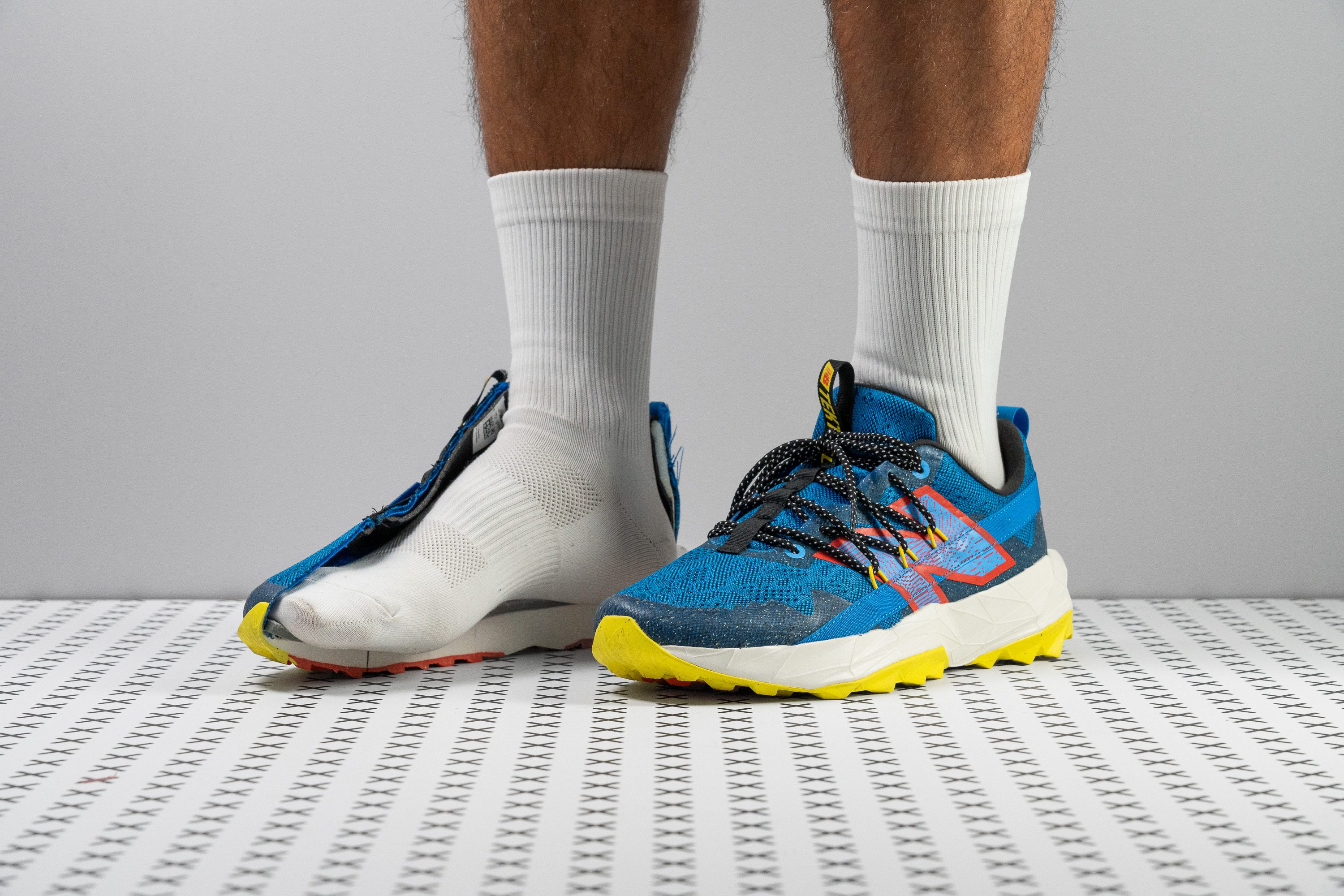Our verdict
Pros
- Tough yet breathable upper
- Ideal for easy, non-technical trails
- Competitively priced
- Suitable for all footstrikes
- Versatile for hiking and walking
- Unique design
- Versatile
- Enough room for toe splay
Cons
- Bad weight/cushioning ratio
- Outsole durability concerns
- Unconventional lacing system
- Lacks reflective elements
Audience verdict
Comparison
The most similar running shoes compared
+ + Add a shoe | |||||
|---|---|---|---|---|---|
| Audience score | 76 Decent! | 87 Great! | 87 Great! | 74 Bad! | |
| Price | $90 | $150 | $130 | $90 | |
| Trail terrain | Light | Light | Light | Light | |
| Shock absorption | - | Moderate | - | - | |
| Energy return | - | Low | - | - | |
| Arch support | Neutral | Neutral | Neutral | Neutral | |
| Weight lab Weight brand | 10.7 oz / 302g 9.9 oz / 282g | 10.3 oz / 292g 10.9 oz / 309g | 9.9 oz / 281g 9.9 oz / 280g | 11 oz / 312g 11.5 oz / 326g | |
| Drop lab Drop brand | 8.0 mm 8.0 mm | 6.0 mm 5.0 mm | 7.2 mm 6.0 mm | 8.2 mm | |
| Strike pattern | HeelMid/forefoot | Mid/forefoot | Mid/forefoot | HeelMid/forefoot | |
| Size | Half size small | True to size | True to size | True to size | |
| Midsole softness | Balanced | Balanced | Soft | Balanced | |
| Difference in midsole softness in cold | Normal | Small | Small | Small | |
| Plate | ✗ | ✗ | Rock plate | ✗ | |
| Toebox durability | Good | Decent | Decent | Decent | |
| Heel padding durability | Decent | Bad | Good | Bad | |
| Outsole durability | Decent | Good | Good | Good | |
| Breathability | Breathable | Warm | Moderate | Moderate | |
| Width / fit | Medium | Narrow | Medium | Narrow | |
| Toebox width | Wide | Medium | Medium | Medium | |
| Stiffness | Stiff | Moderate | Stiff | Stiff | |
| Torsional rigidity | Moderate | Stiff | Stiff | Moderate | |
| Heel counter stiffness | Moderate | Moderate | Moderate | Moderate | |
| Lug depth | 2.4 mm | 3.1 mm | 2.5 mm | 2.9 mm | |
| Heel stack lab Heel stack brand | 32.2 mm 32.0 mm | 31.7 mm 29.0 mm | 31.0 mm 32.6 mm | 33.8 mm | |
| Forefoot lab Forefoot brand | 24.2 mm 24.0 mm | 25.7 mm 24.0 mm | 23.8 mm 26.6 mm | 25.6 mm | |
| Widths available | NormalWide | NarrowNormal | Normal | NormalWideX-Wide | |
| Season | SummerAll seasons | All seasons | All seasons | All seasons | |
| Removable insole | ✓ | ✓ | ✓ | ✓ | |
| Orthotic friendly | ✓ | ✓ | ✓ | ✓ | |
| Ranking | #344 Bottom 7% | #149 Top 40% | #154 Top 42% | #360 Bottom 3% | |
| Popularity | #180 Top 49% | #194 Bottom 47% | #297 Bottom 20% | #312 Bottom 16% |
Who should buy
We think the New Balance Tektrel is a smart choice if you:
- Seek a budget-friendly shoe versatile enough for both road and trail—ideal for those who switch terrains.
- Need just one shoe that covers various surfaces and offers great value for money, perfect for travel.
- Are seeking an affordable door-to-trail shoe that doubles as casual wear—if you're okay with its unique look!
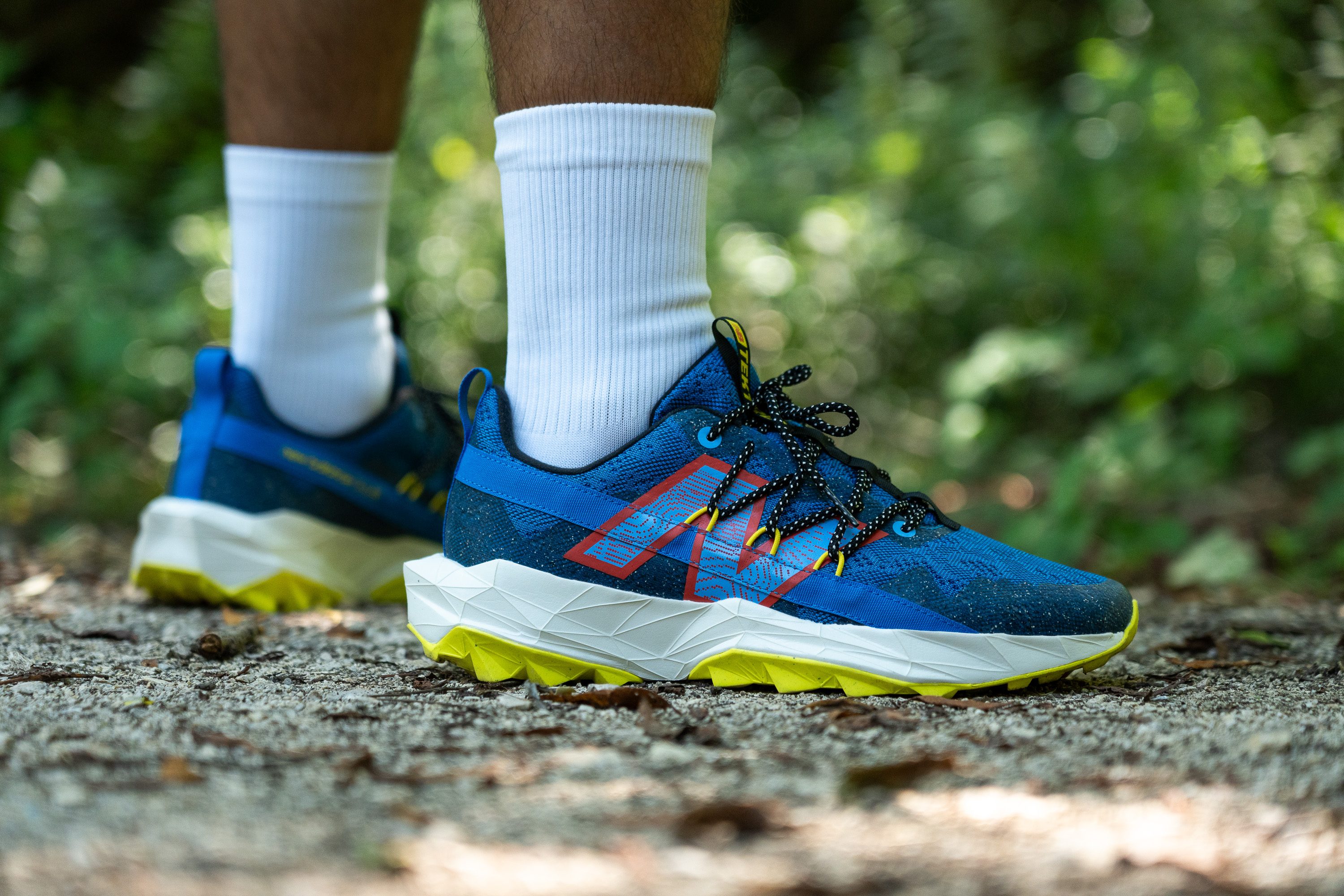
Who should NOT buy
We've tested the Tektrel thoroughly and found that its outsole is somewhat lacking—it shows more wear and provides less traction than expected.
While not the worst outsole by any means, we believe there are better options available if you're willing to invest a bit more. For those needing a more durable and grippy outsole, we highly recommend upgrading to the New Balance Fresh Foam X Hierro v8 or the Hoka Speedgoat 6, both featuring top-tier Vibram outsoles and more energetic midsoles.
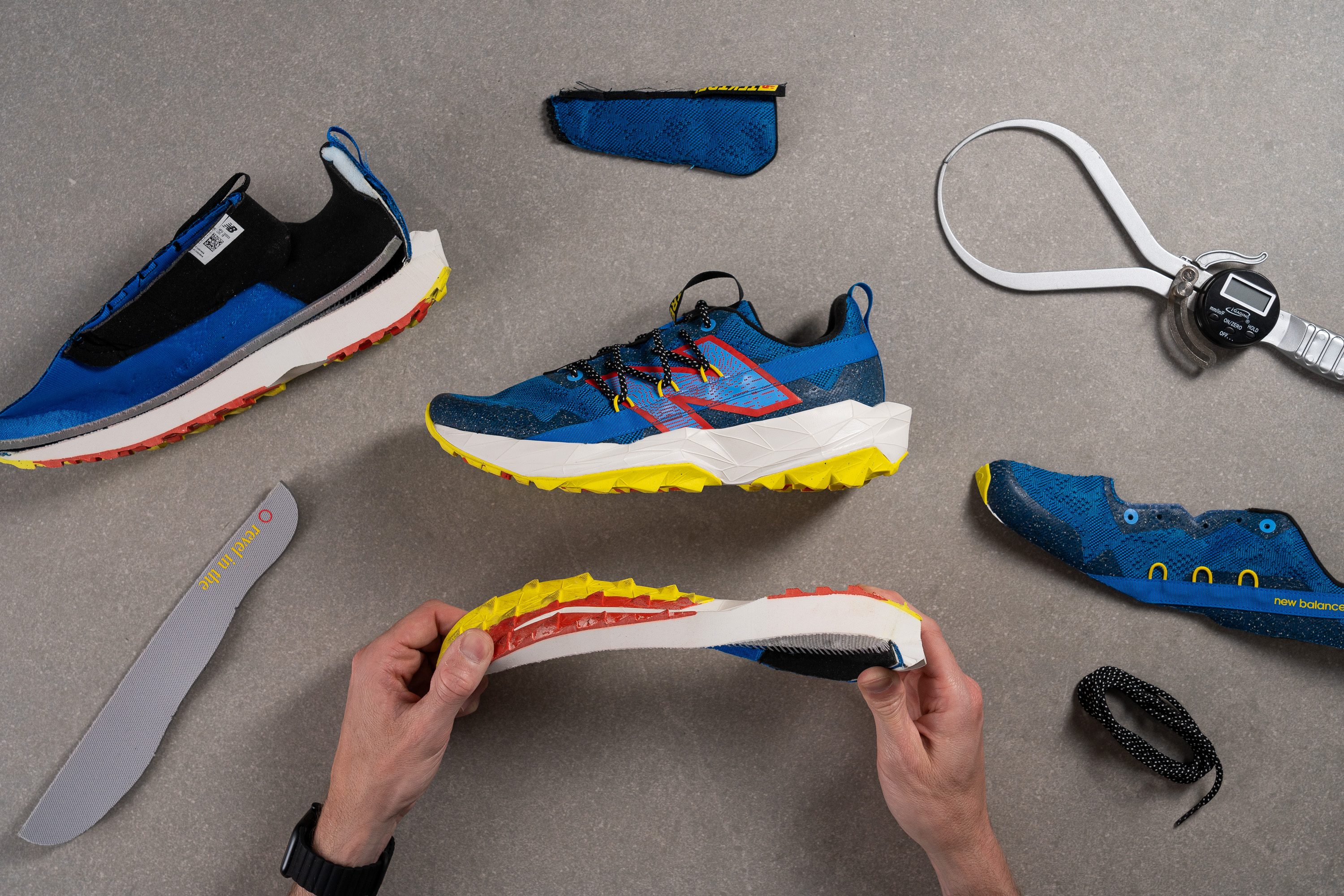
In our experience, the Tektrel also falls short in terms of weight—it feels overly heavy for its cushioning. We think that for runners concerned about shoe weight and seeking a more agile door-to-trail option, the Hoka Challenger 7 or the Hoka Torrent 3 would be much better choices.
Cushioning
Heel stack
As we noted earlier, the Tektrel does not feature a maximalist design, leading us to consider it slightly overweight given its level of cushioning.
In our analysis of the heel, we measured a height of 32.2 mm, which aligns with the average and proves appropriate for a wide range of activities, distances, and overall comfort. Any additional height could have compromised the shoe's performance, so we're pleased with this aspect of the Tektrel's design.
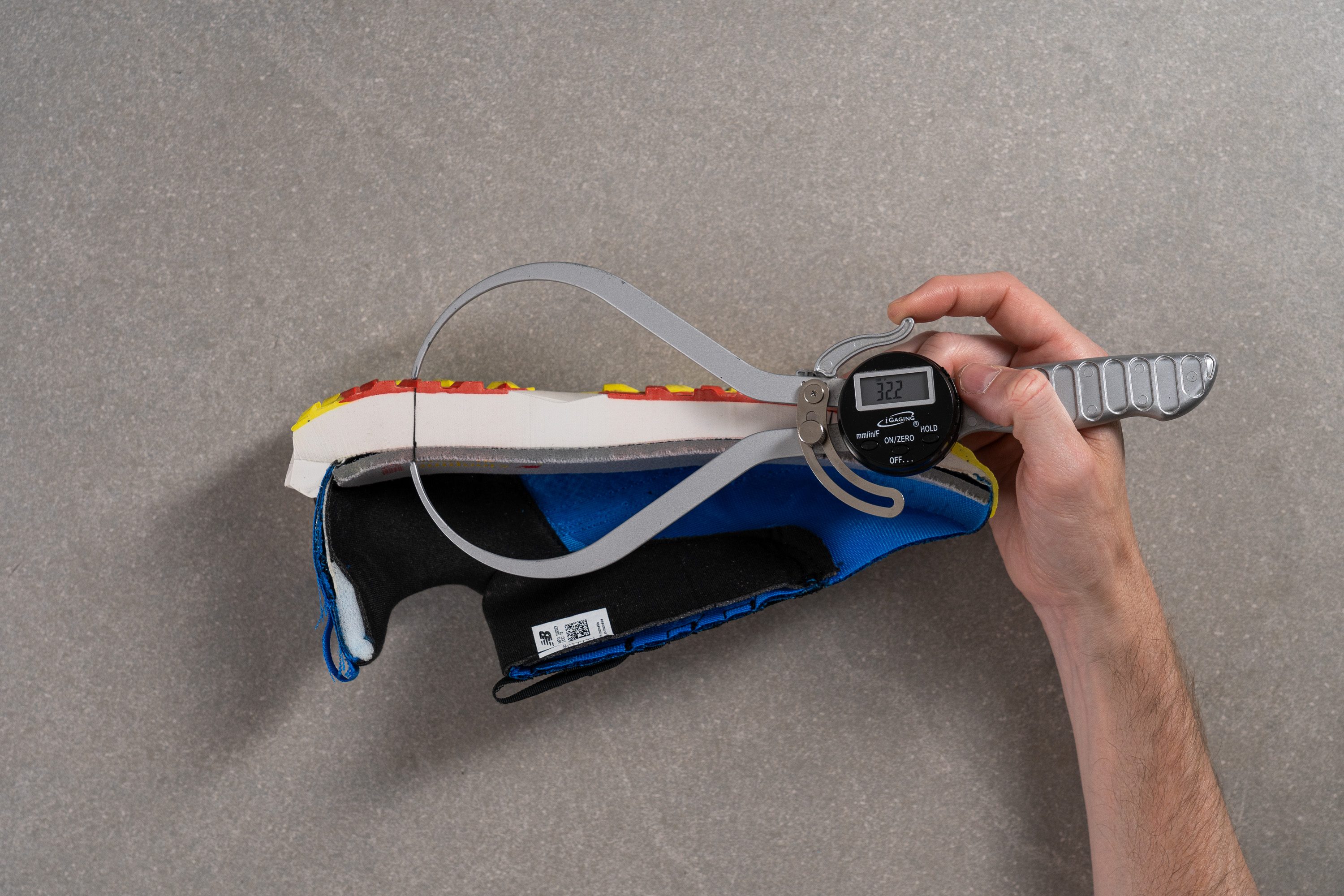
| Tektrel | 32.2 mm |
| Average | 32.6 mm |
Forefoot stack
We used our digital calipers once more and measured a 24.2 mm stack height in the forefoot. This places it between minimalist and maximalist designs, aligning closely with the average trail running shoe again.

| Tektrel | 24.2 mm |
| Average | 25.1 mm |
Drop
We verified an 8.0 mm heel-to-toe drop, aligning exactly with New Balance's official specifications—a rare occurrence in our testing. Kudos to them for such precision.
An 8 mm drop is considered ideal for shoes designed to support all 3 footstrikes—rearfoot, midfoot, and forefoot.
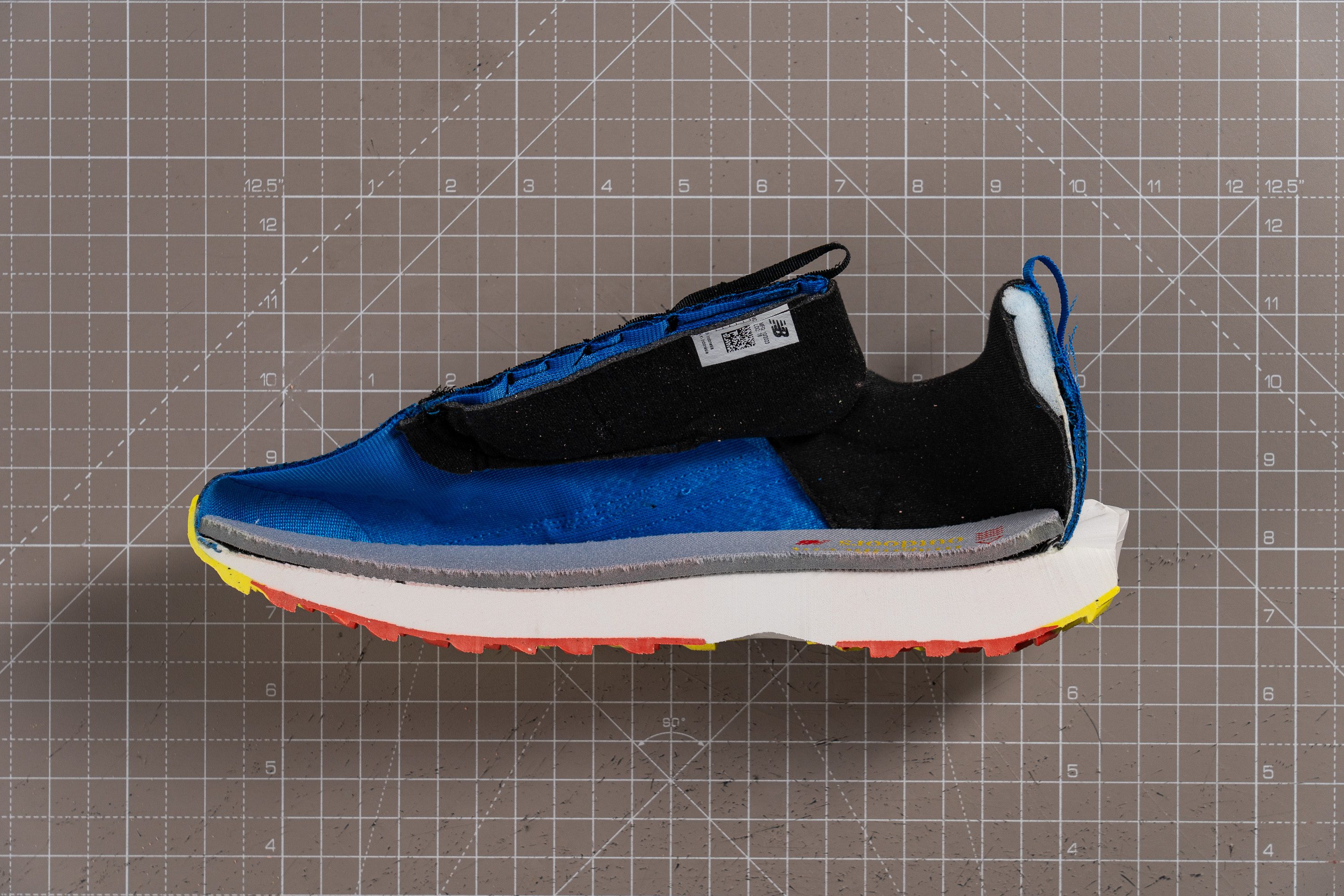
| Tektrel | 8.0 mm |
| Average | 7.5 mm |
Midsole softness
New Balance often highlights their midsole names in their shoes—like the FuelCell Rebel v4 or the Fresh Foam X More Trail v3. However, they chose not do so for the Tektrel, and it's because it doesn’t feature any advanced materials.
In fact, this model uses basic EVA foam, which doesn't stand out in terms of energy return, a choice we find understandable given its $90 price point.
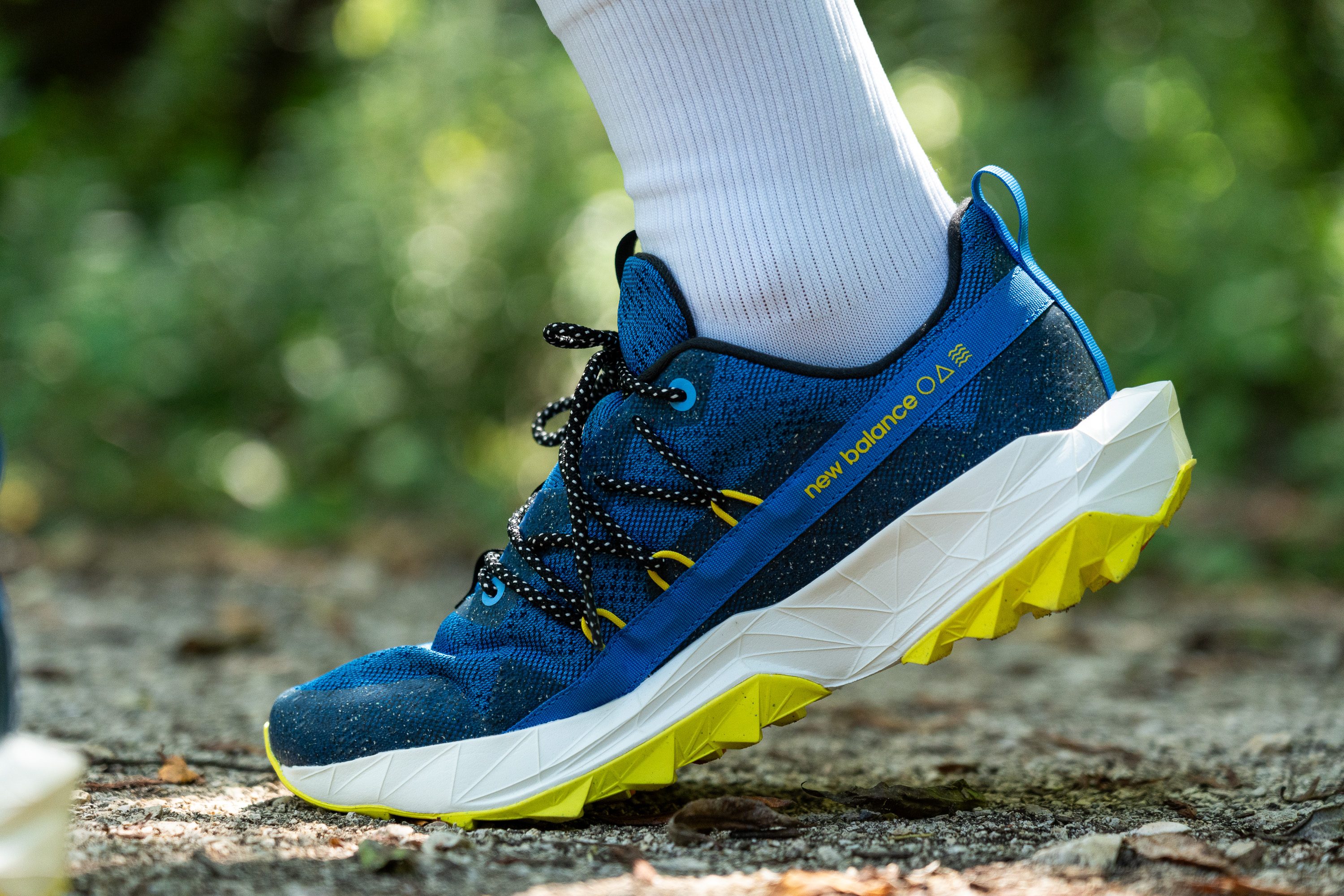
Regarding comfort, the ride offered by the Tektrel is quite balanced. Our Shore A durometer recorded a score of 23.0 HA, closely aligning with the average, as it's the norm with this model.
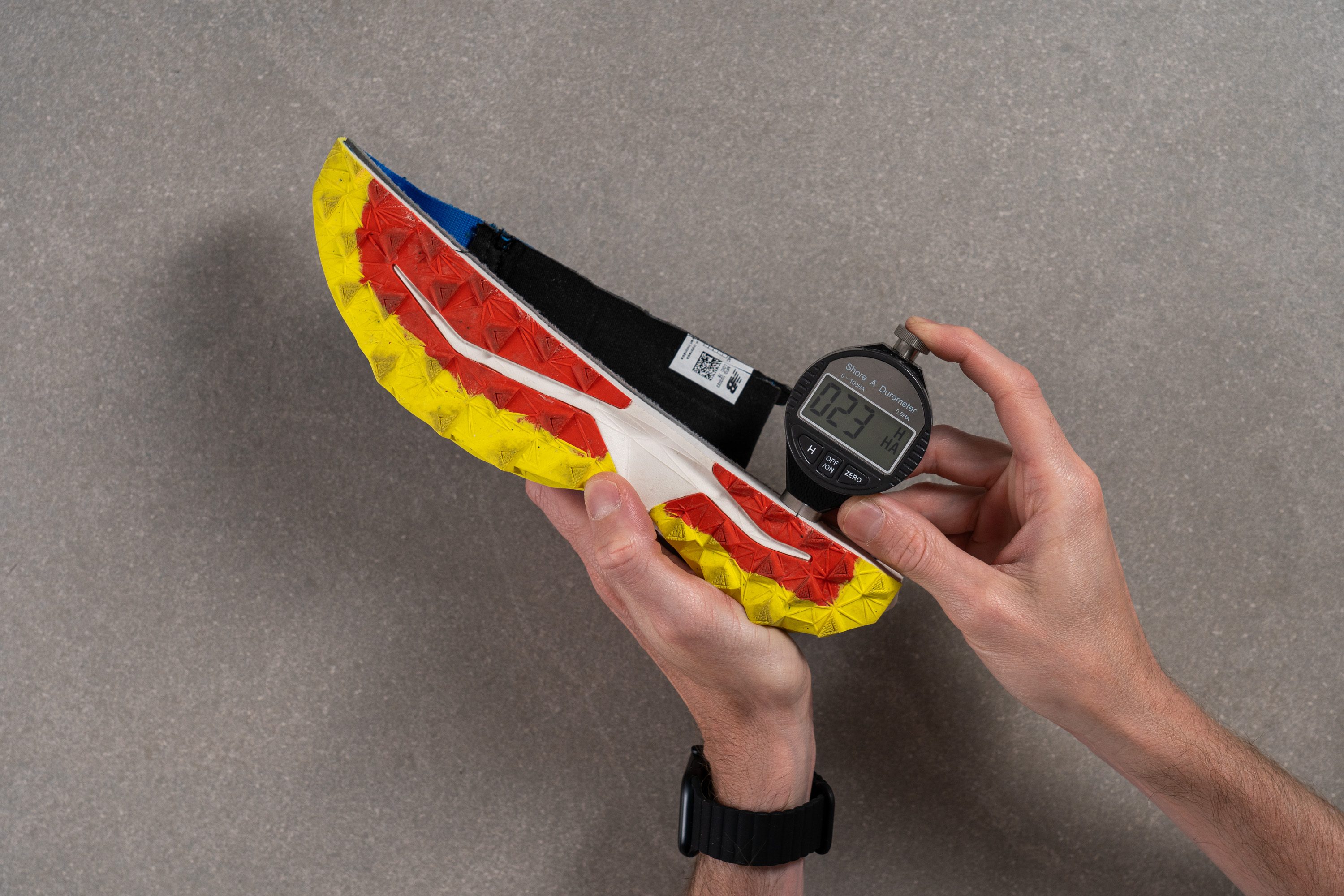
| Tektrel | 23.0 HA |
| Average | 21.9 HA |
Size and fit
Size
New Balance Tektrel fits slightly small (41 votes).
Width / Fit
After measuring the widest part of the upper at 99.5 mm, we discovered that New Balance adopted a straightforward, conservative approach with the Tektrel's toebox, aiming to provide a comfortable fit for a broad range of runners.
Regarding vertical space, the upper presents no issues whatsoever, offering ample room for those going for extended journeys.
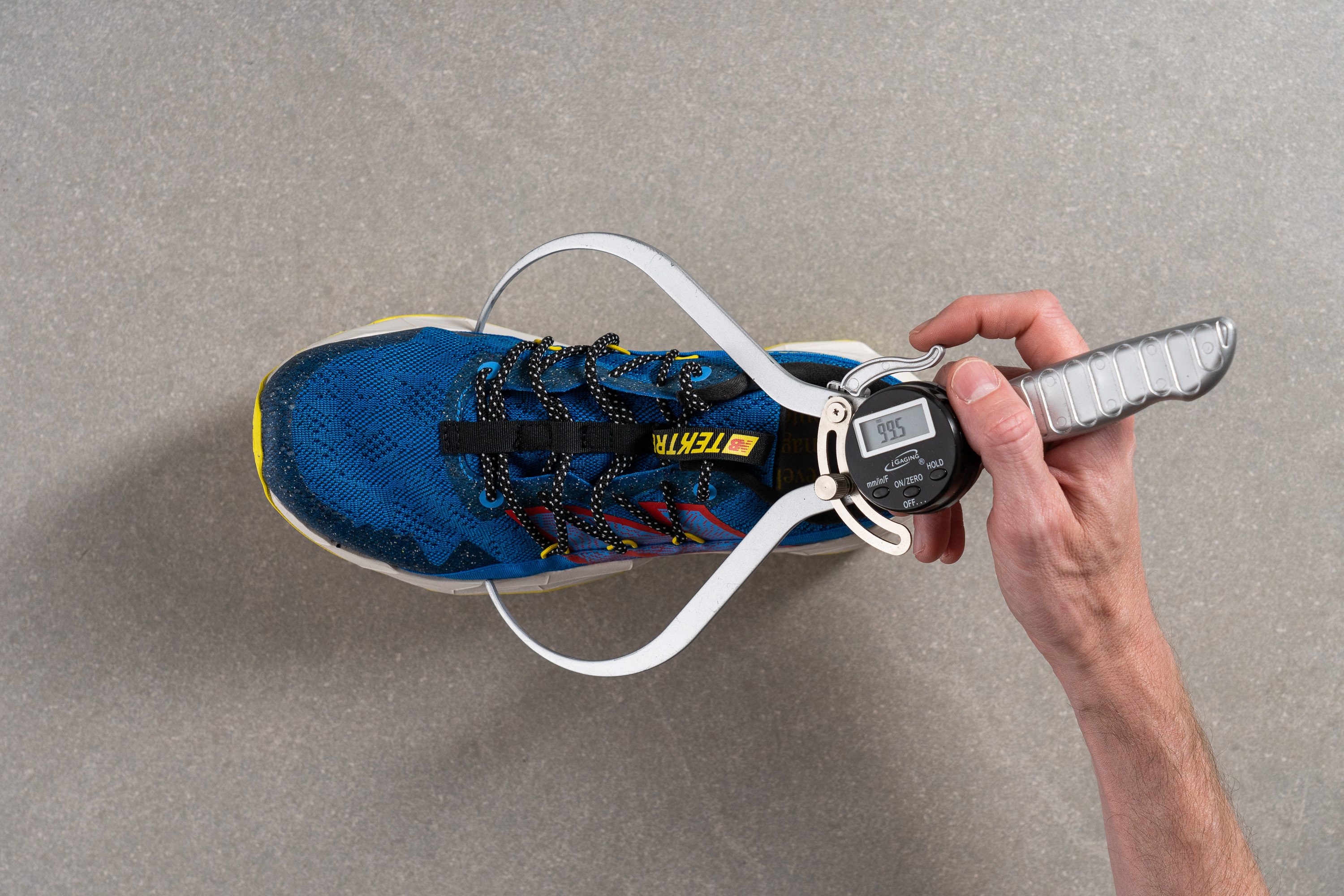
This test follows an older methodology, which is why you don't see recently tested shoes in the chart. Results from different methodologies can not be compared.
| Tektrel | 99.5 mm |
| Average | 98.9 mm |
Toebox width
Our initial thoughts were confirmed after a second measurement in the toebox showed 79.7 mm, indicating a very average taper that should accommodate most runners comfortably.
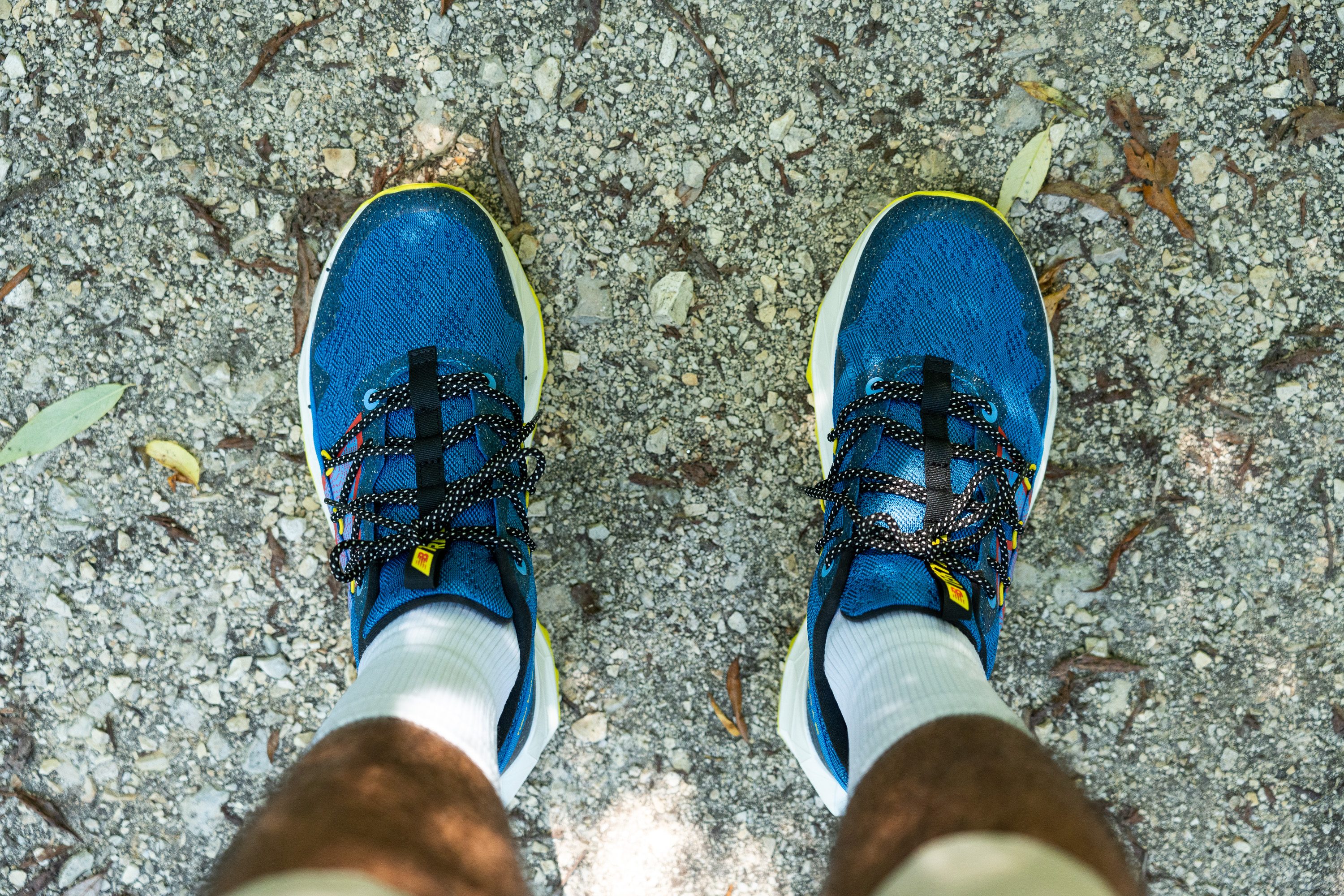
This typical dimension should suit most individuals comfortably. However, for those requiring additional space, New Balance provides a Wide size in select markets.
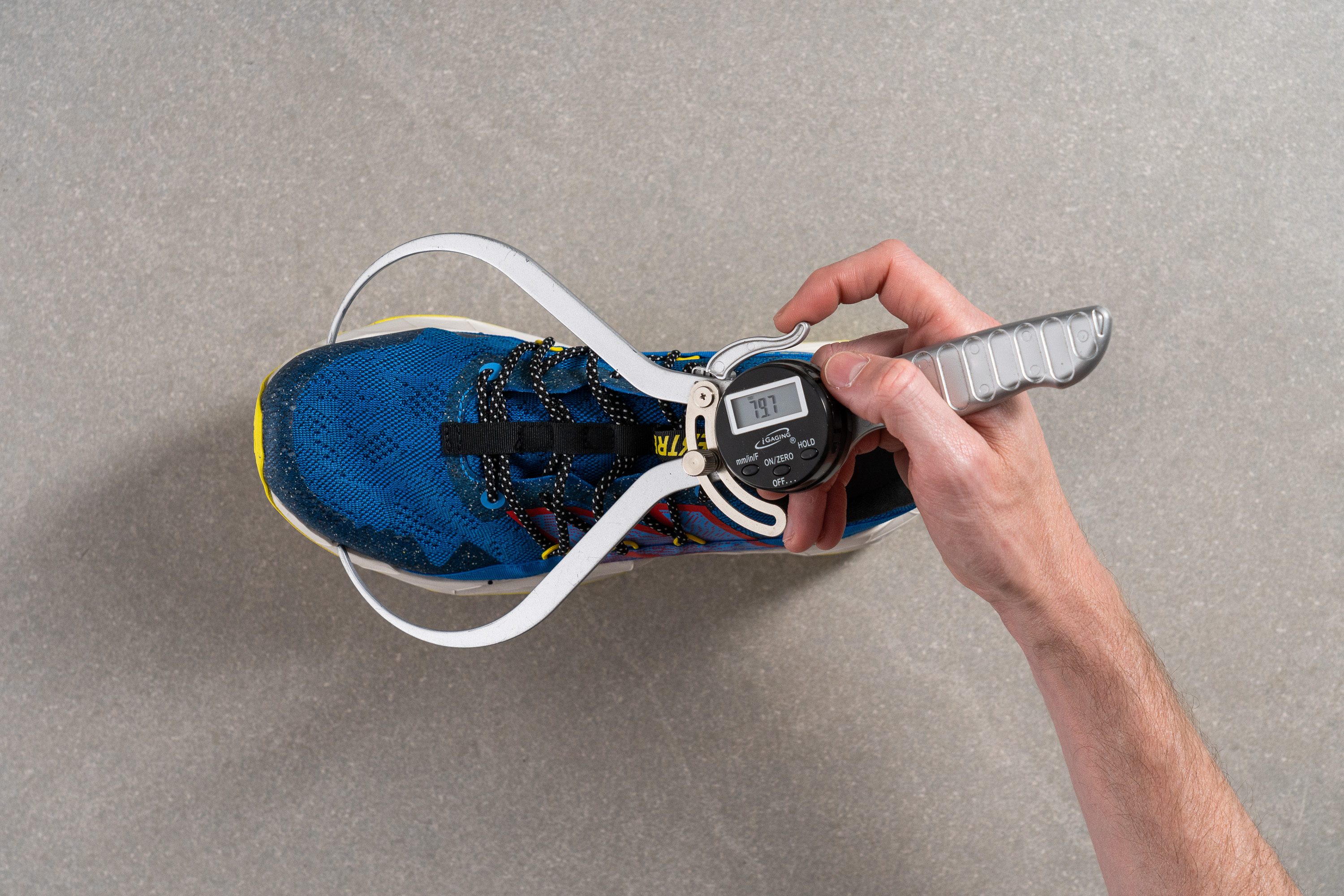
This test follows an older methodology, which is why you don't see recently tested shoes in the chart. Results from different methodologies can not be compared.
| Tektrel | 79.7 mm |
| Average | 79.3 mm |
Traction / Grip
Lug depth
We've mentioned before that this shoe falls into the "door-to-trail" category—meant for both road running and light trail use, making it a versatile choice for those who frequently transition between different surfaces during training or travel.
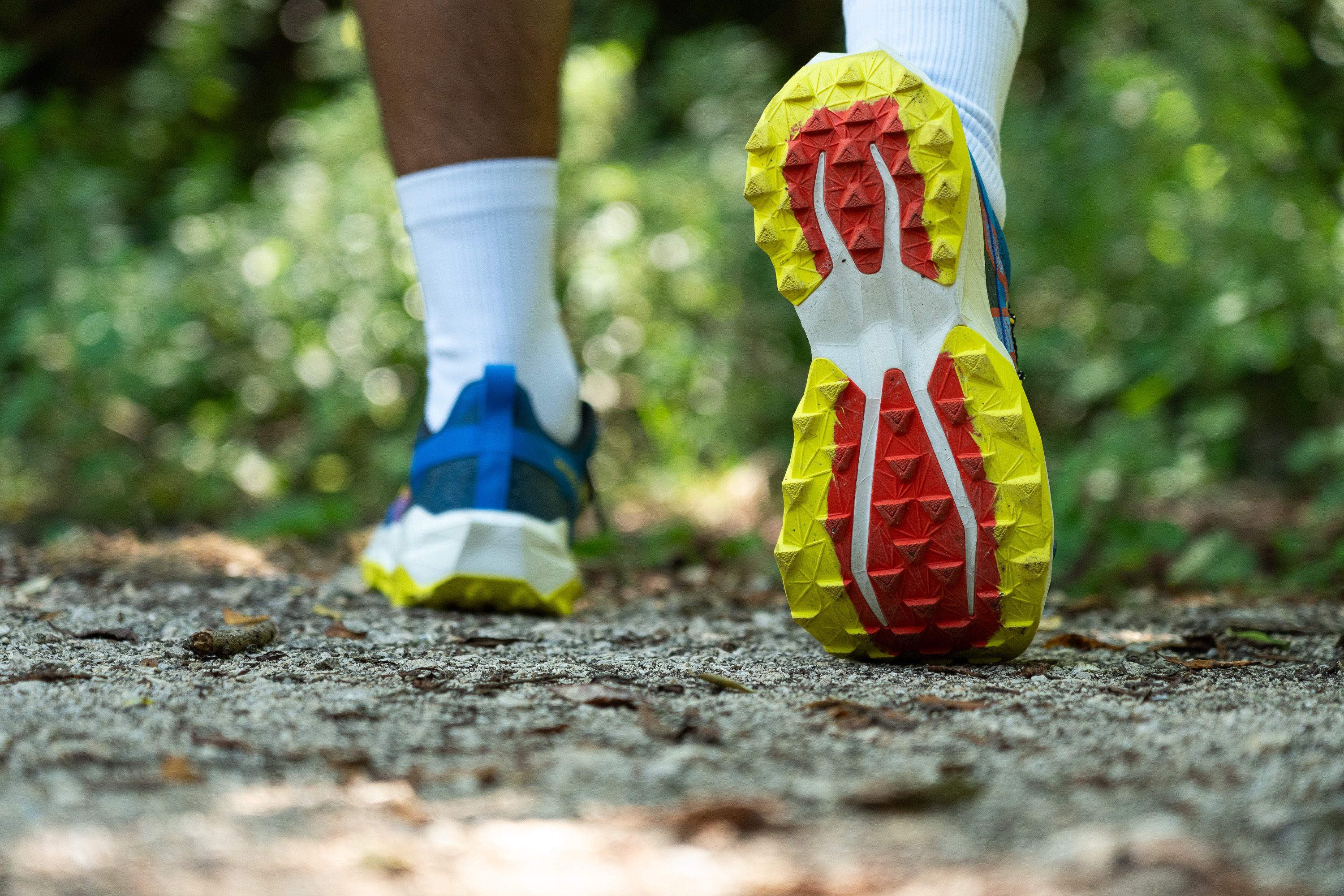
The lugs on these shoes meet the necessary criteria too. At just 2.4 mm, they are quite small, which is crucial for ensuring the shoe performs well on road sections. However, this advantage comes with a drawback: the shoe is not suitable for technical or even moderately challenging trails.

| Tektrel | 2.4 mm |
| Average | 3.5 mm |
Flexibility / Stiffness
We secured the Tektrel to our workbench and flexed it to 90 degrees, just like we do with every shoe here in the lab. The result was a 21.8N reading, indicating it's highly flexible, which is excellent for comfort.
We expected this level of flexibility since the shoe lacks any kind of plate or significant stack height.
This test follows an older methodology, which is why you don't see recently tested shoes in the chart. Results from different methodologies can not be compared.
| Tektrel | 21.8N |
| Average | 27.1N |
Weight
The Tektrel has performed well for its price until now, yet we found its weight is a significant drawback.
Immediately upon handling them in our lab and during field tests, the shoes felt notably heavy. Our measurements in the lab—10.7 oz or 302g—reinforced our concerns. Given that the shoe lacks substantial stack height, this weight seems excessive and calls for improvements in the next version.
| Tektrel | 10.7 oz (302g) |
| Average | 10.2 oz (289g) |
Breathability
At first glance, the Tektrel upper impressed us with a reinforced toe cap and engineered mesh featuring numerous ventilation holes, promising excellent breathability.
Using our smoke machine, we confirmed that New Balance has indeed created an exceptionally breathable shoe, as it earned a perfect score of 5 out of 5 in our tests.
Shining light across the upper revealed how effectively the ventilation is achieved. The toebox sports a strategically designed pattern of holes that significantly enhance airflow.
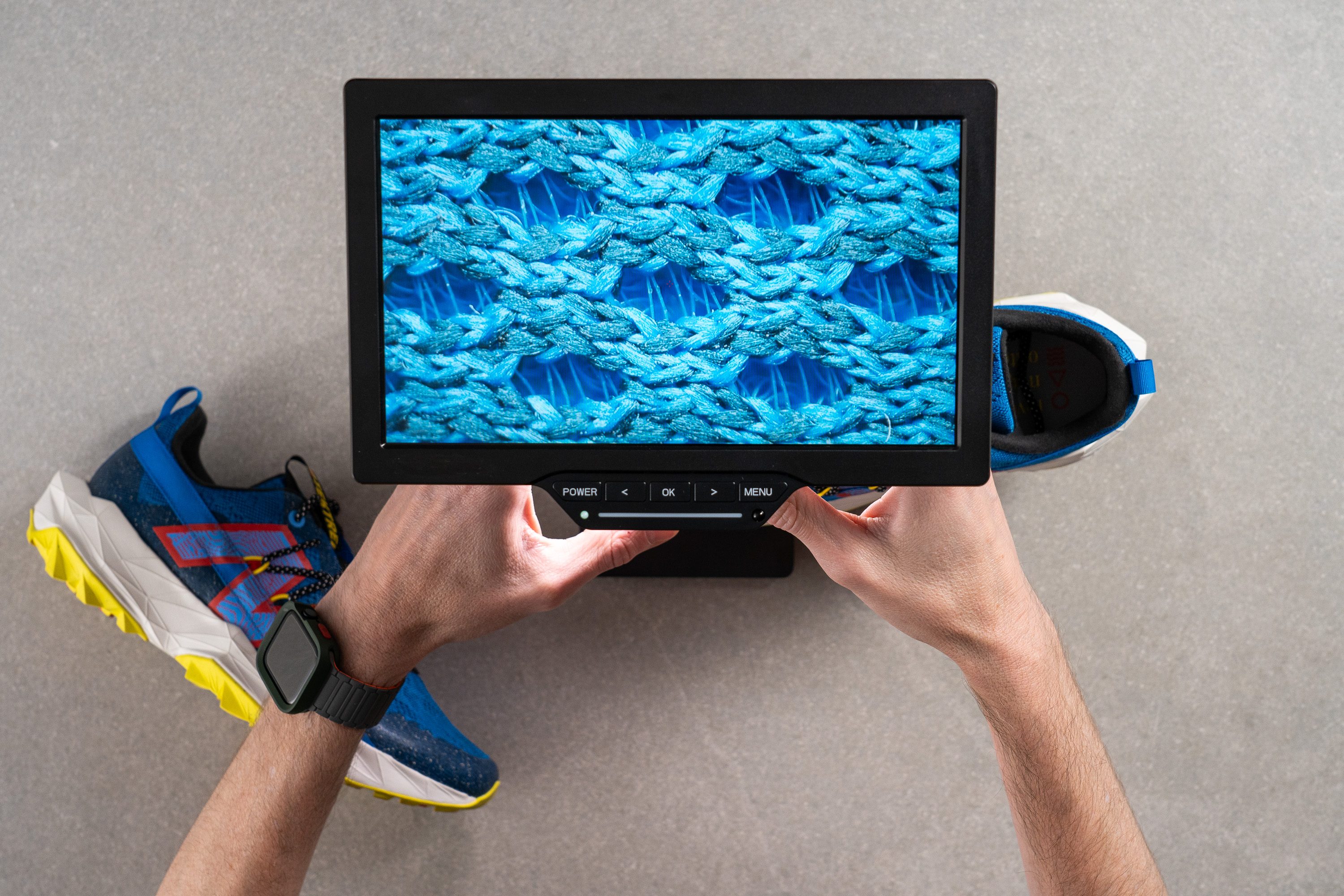
We then examined the mesh under a microscope and noted its typical engineered layout—featuring a thicker top layer coupled with a softer fabric underneath that supports airflow at the same time that provides a bit of comfort.
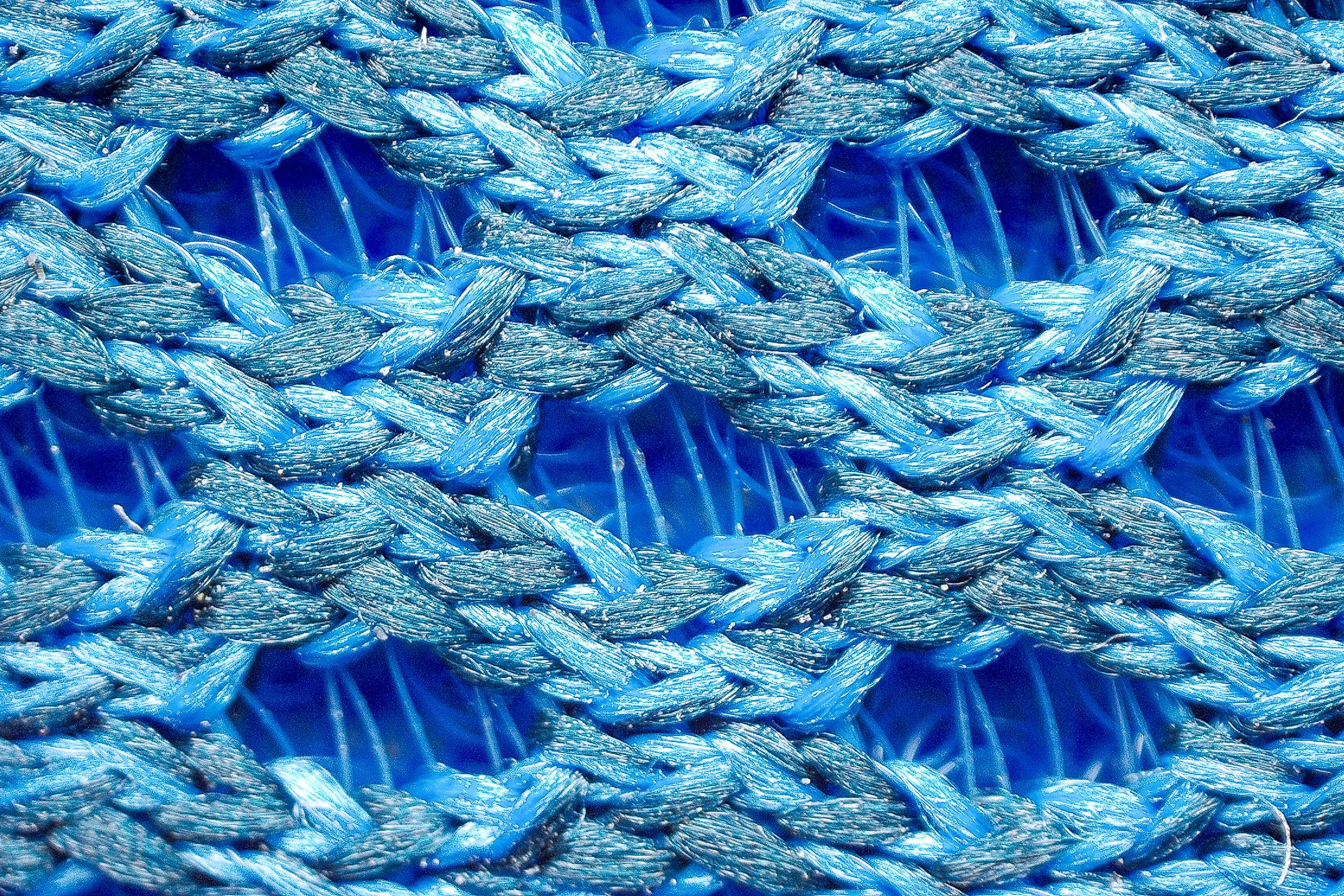
For a door-to-trail shoe priced under $100, the upper is great.
While it may not match the comfort of some higher-priced models we've tested here in the lab, it's crucial to consider its affordability when evaluating its features.
| Tektrel | 5 |
| Average | 3.2 |
Stability
Lateral stability test
The Tektrel is a neutral trail running shoe that lacks specialized stability features. But thanks to its average stack height and firmer foam, it manages to perform decently in terms of stability.
However, we do not recommend it for runners who need specific stability support, particularly heel strikers. For those requiring more rearfoot support in a door-to-trail shoe, we suggest the Dynasoft Nitrel v5 from New Balance as a superior, still-easy-on-the-wallet option.
Torsional rigidity
The Tektrel is designed for versatility, but at the same time, aiming to be comfortable, and shoes that are too stiff can ruin the experience of non-running activities. Keeping this in mind, we found it achieves a 3 out of 5 in our manual assessment.
If we were designing this shoe, we might have aimed for a touch more flexibility. However, we recognize the challenges of enhancing flexibility in trail shoes due to its rugged design.
| Tektrel | 3 |
| Average | 3.6 |
Heel counter stiffness
The heel counter of the shoe struck us as fairly standard while running and testing it in the lab—not as flexible as a competition shoe, yet noticeably less rigid than a typical stability shoe. New Balance has clearly opted for a cautious approach in this area, and unsurprisingly, we assigned it a score of 3 out of 5. Yes, once again.
| Tektrel | 3 |
| Average | 3 |
Midsole width - forefoot
Focusing on the midsole dimensions, we recorded a width of 114.8 mm at the forefoot's broadest point, reflecting a conventional design strategy that suits most runners well. In our view, this width offers a practical balance for any door-to-trail shoe.
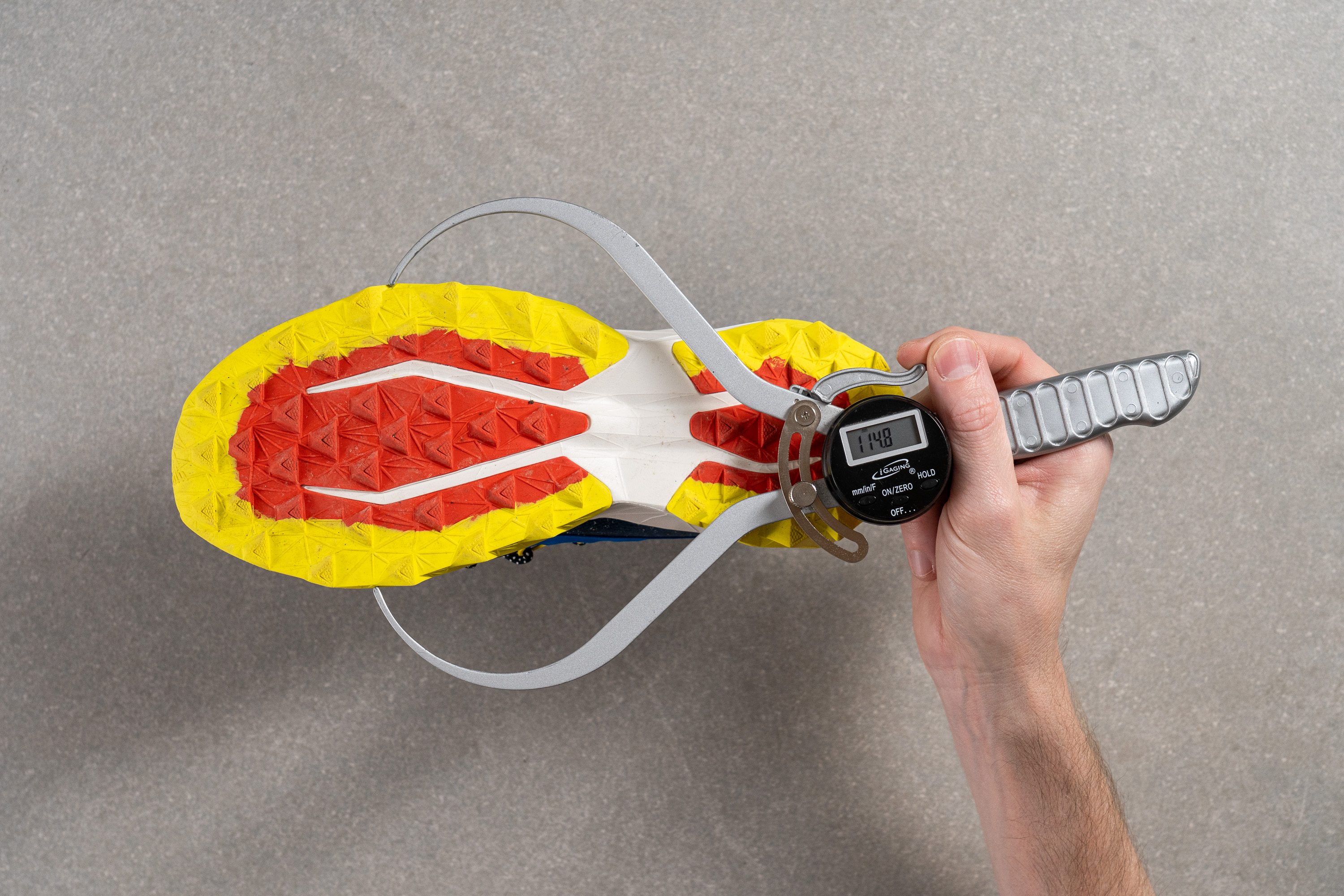
| Tektrel | 114.8 mm |
| Average | 112.8 mm |
Midsole width - heel
The heel of the Tektrel is narrower than usual at 85.0 mm, which led us to feel less stability, and that's why we do not recommend it for heel strikers concerned with stability. However, for neutral runners, it's just fine and offers significant agility for maneuvering corners, particularly on downhill runs.
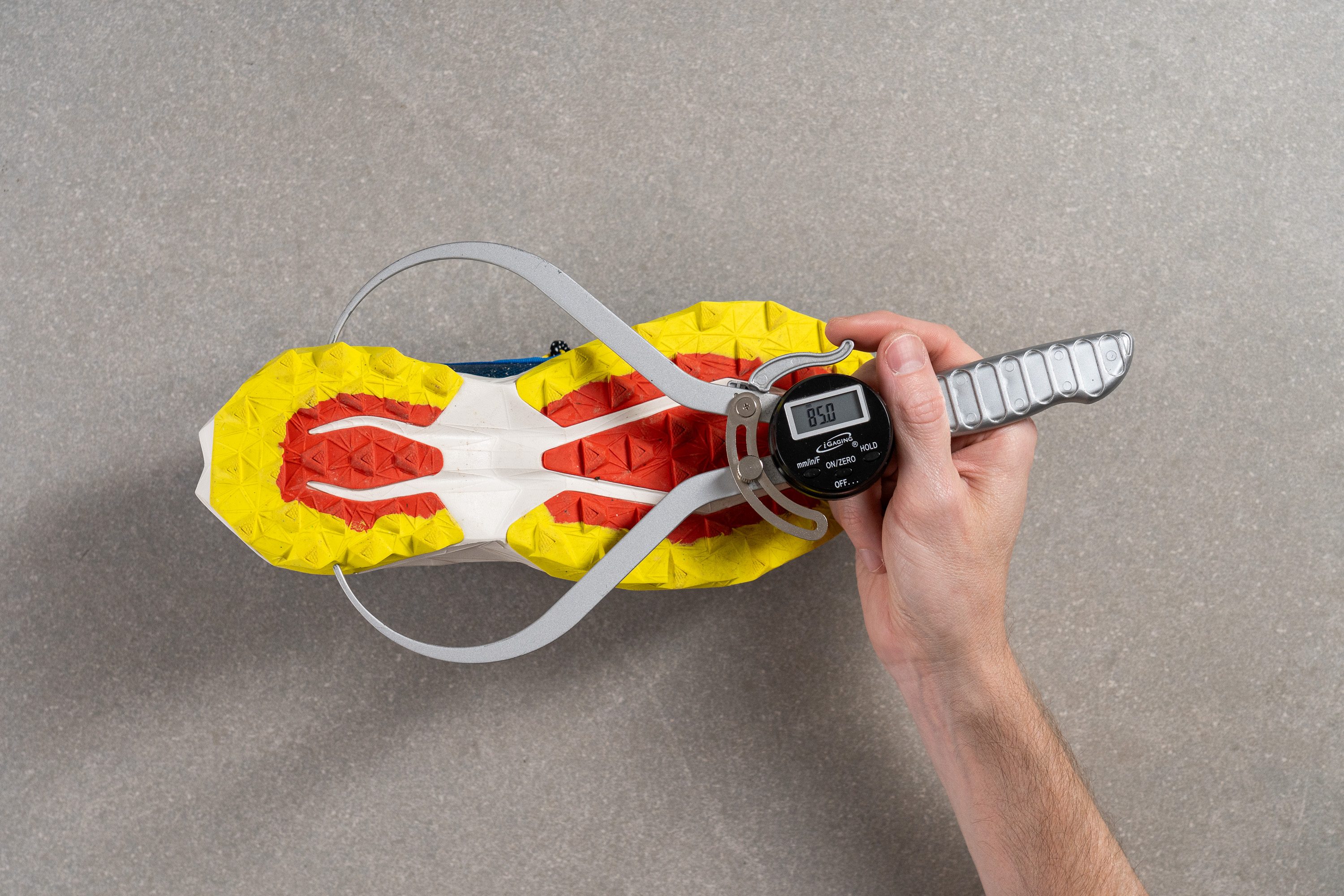
| Tektrel | 85.0 mm |
| Average | 89.9 mm |
Durability
Toebox durability
To evaluate the durability of the Tektrel's toebox, we fired up our Dremel tool for the first time today.
The toebox made an excellent first impression in terms of durability, achieving a robust 4 out of 5 in our initial test with the Dremel.
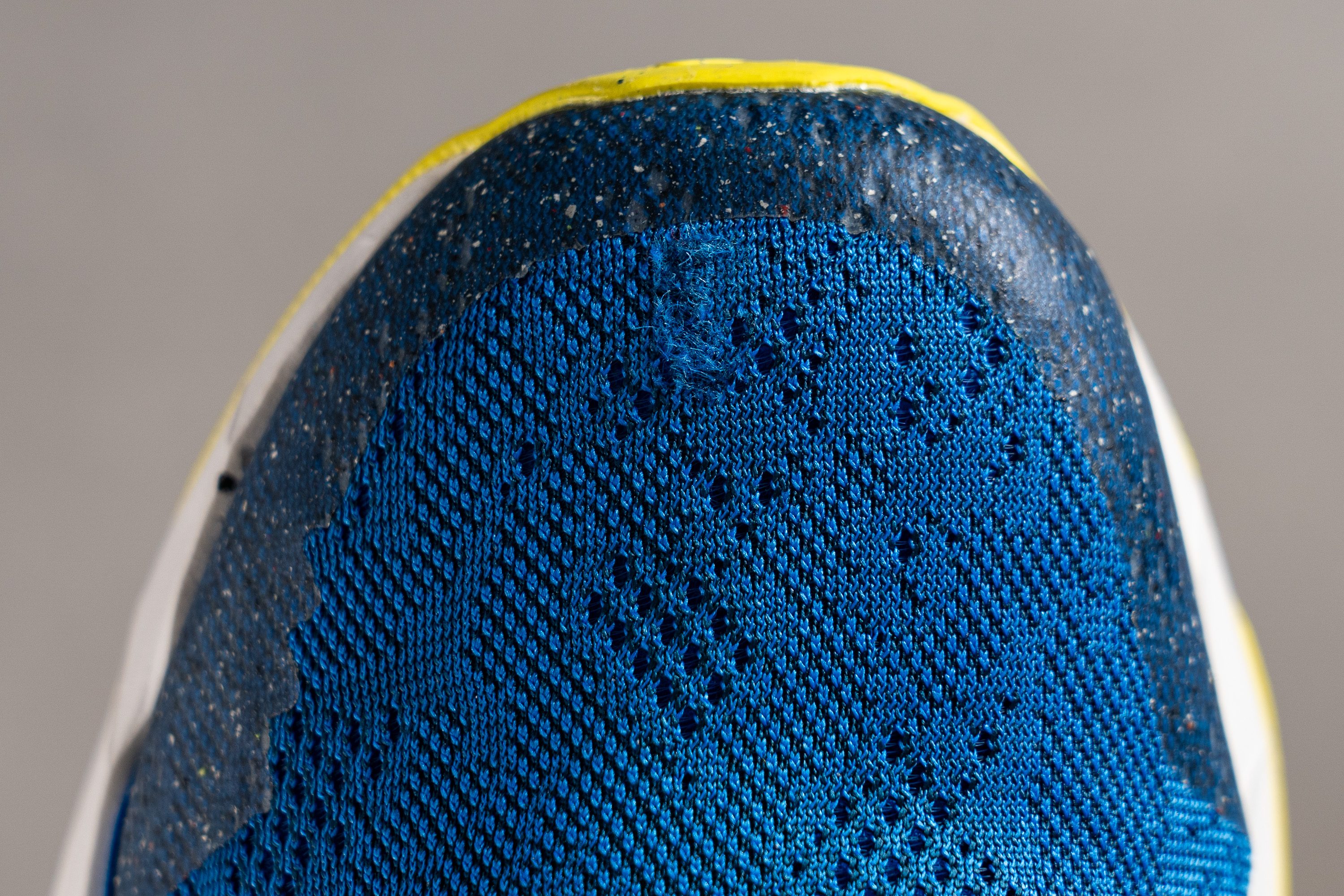
| Tektrel | 4 |
| Average | 3.1 |
Heel padding durability
Riding the wave of a positive outcome, we were eager to see if the Tektrel could maintain its impressive performance.
Unfortunately, the heel padding didn't match the toebox's success, scoring a 3 out of 5. Although not a poor score, this result was slightly disappointing given our initial enthusiasm. However, viewed objectively, it still represents a good performance.
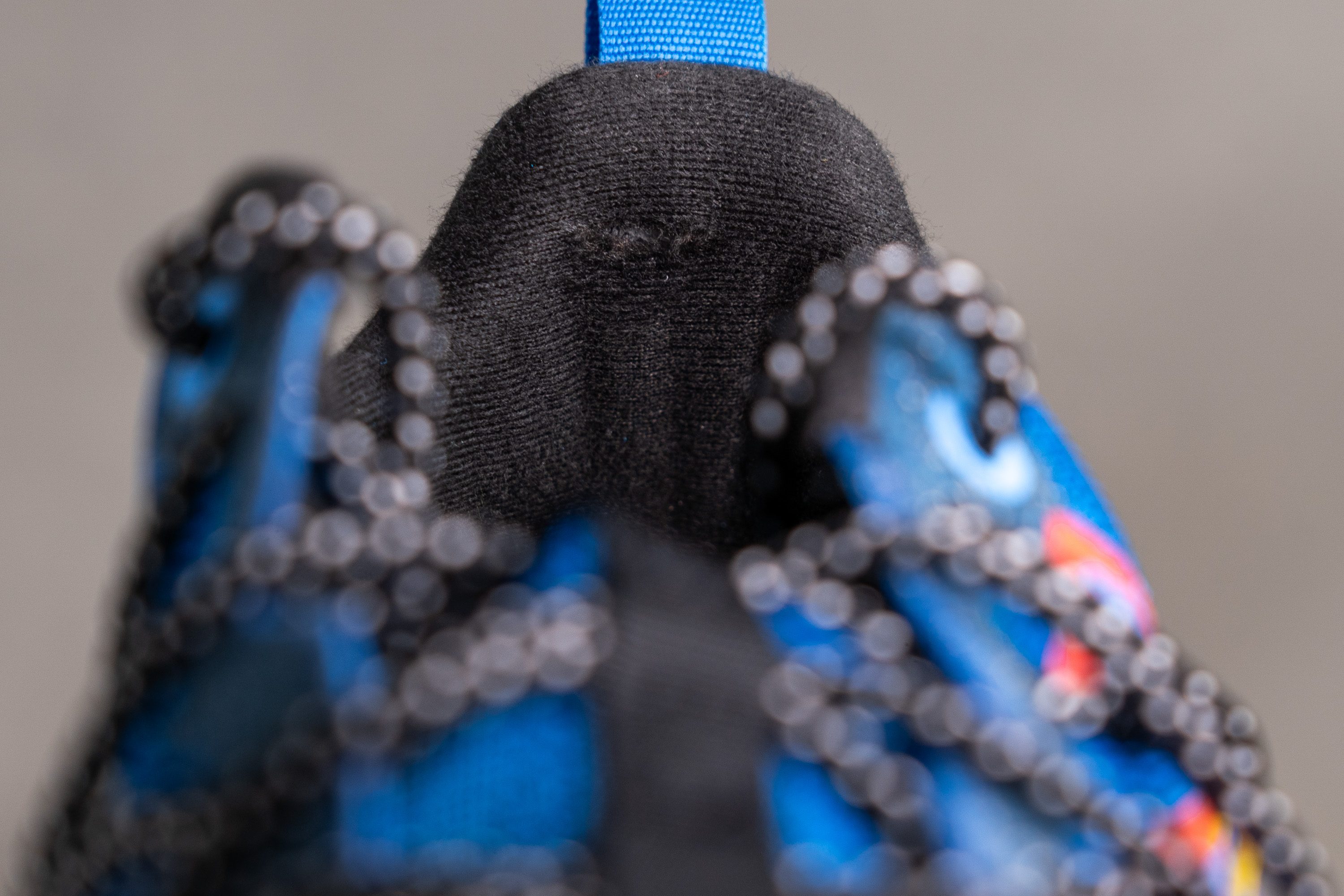
| Tektrel | 3 |
| Average | 3 |
Outsole hardness
It's time to evaluate the AT Tread outsole, which is crucial for any road-to-trail shoe, particularly where durability across varied terrains is a concern.
Upon testing, we pressed our durometer into the rubber and recorded a hard formulation of 90.9 HC. This clearly indicates a focus on enhancing durability, with grip being a secondary priority.
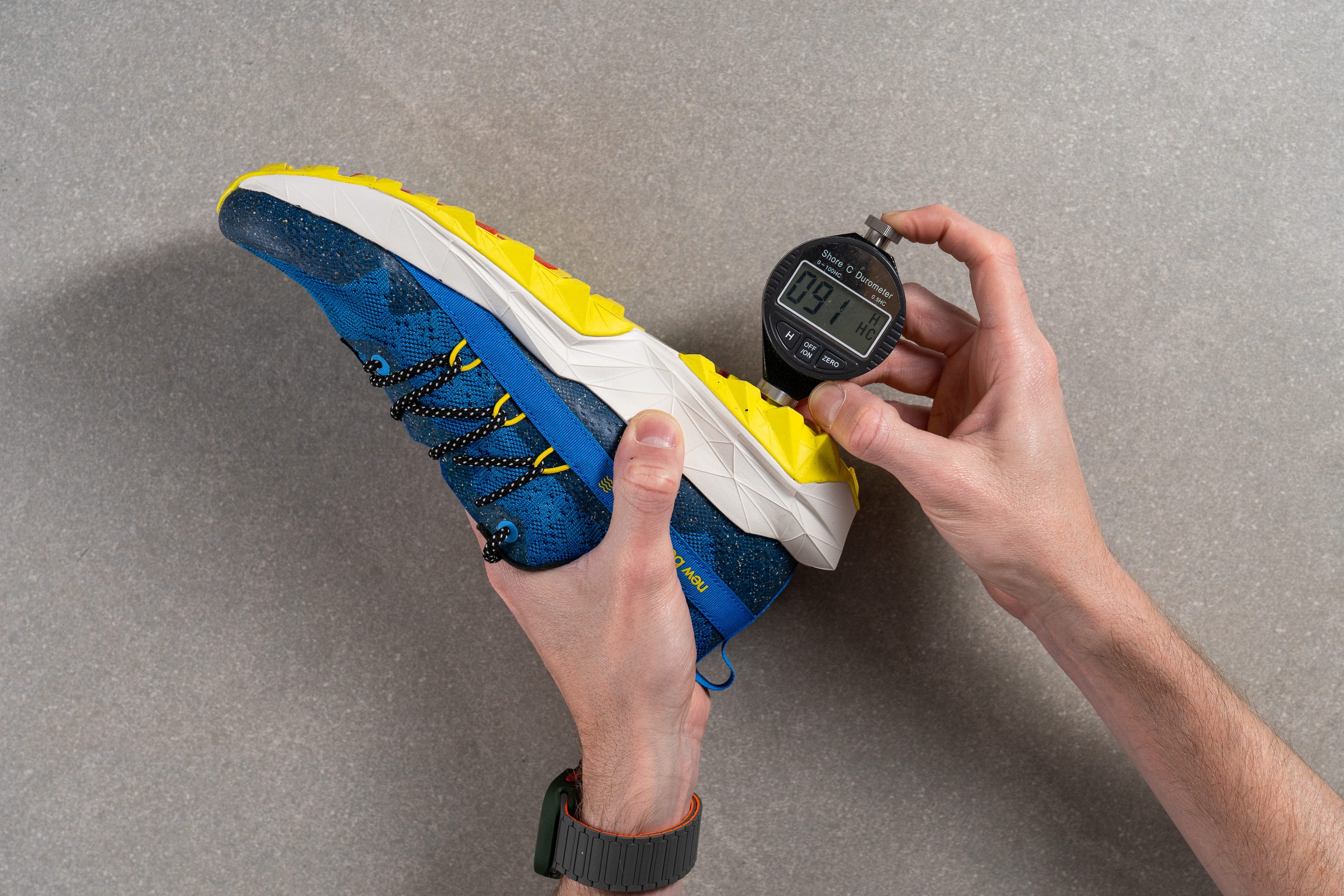
| Tektrel | 90.9 HC |
| Average | 85.8 HC |
Outsole durability
During our intensive final Dremel test, the results were underwhelming, though not completely disastrous—an indentation of 1.1 mm was observed.
While not alarming by any means, this result is also far from ideal. For those who rapidly wear down their outsole rubber, we recommend opting for a more durable option, like the Merrell Agility Peak 5.
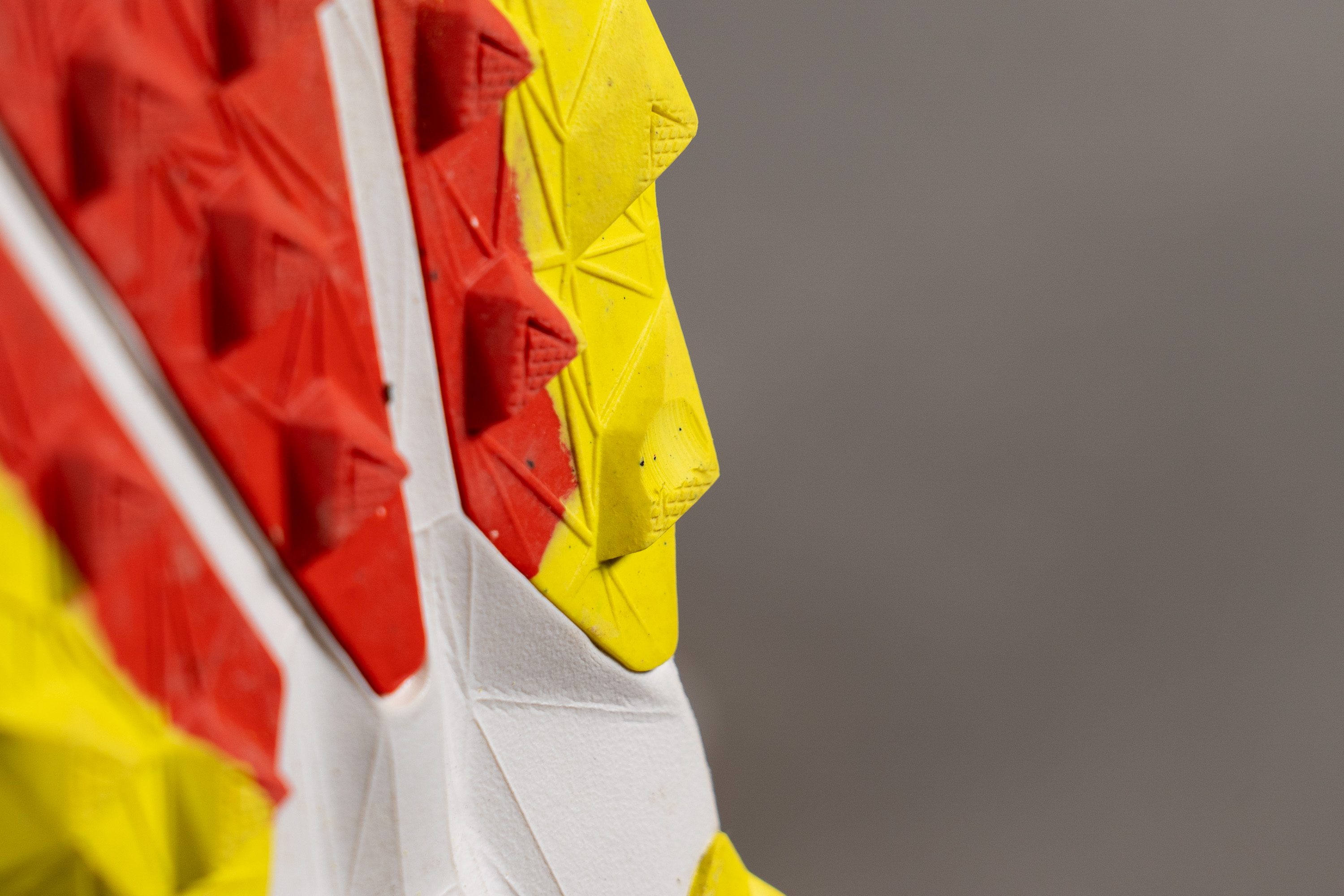
| Tektrel | 1.1 mm |
| Average | 0.9 mm |
Outsole thickness
New Balance has compensated for the AT Tread outsole's modest durability by adding a thickness of 2.5 mm, which not only enhances protection but also serves as a shield—and this really matters since this shoe does not include a rock plate.
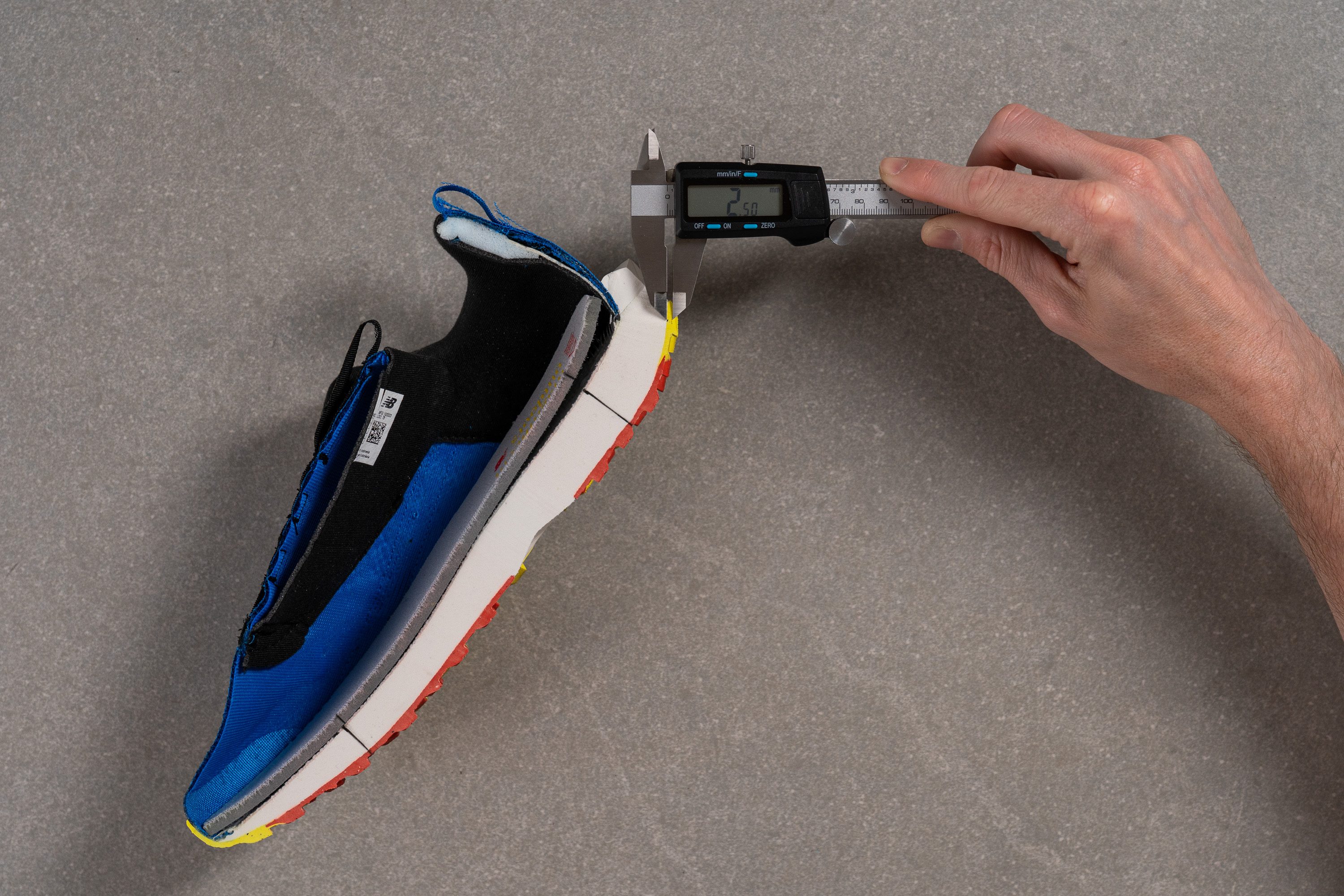
| Tektrel | 2.5 mm |
| Average | 2.2 mm |
Misc
Insole thickness
The insole, made of EVA, boasts a thickness of 4.7 mm. Just normal stuff.
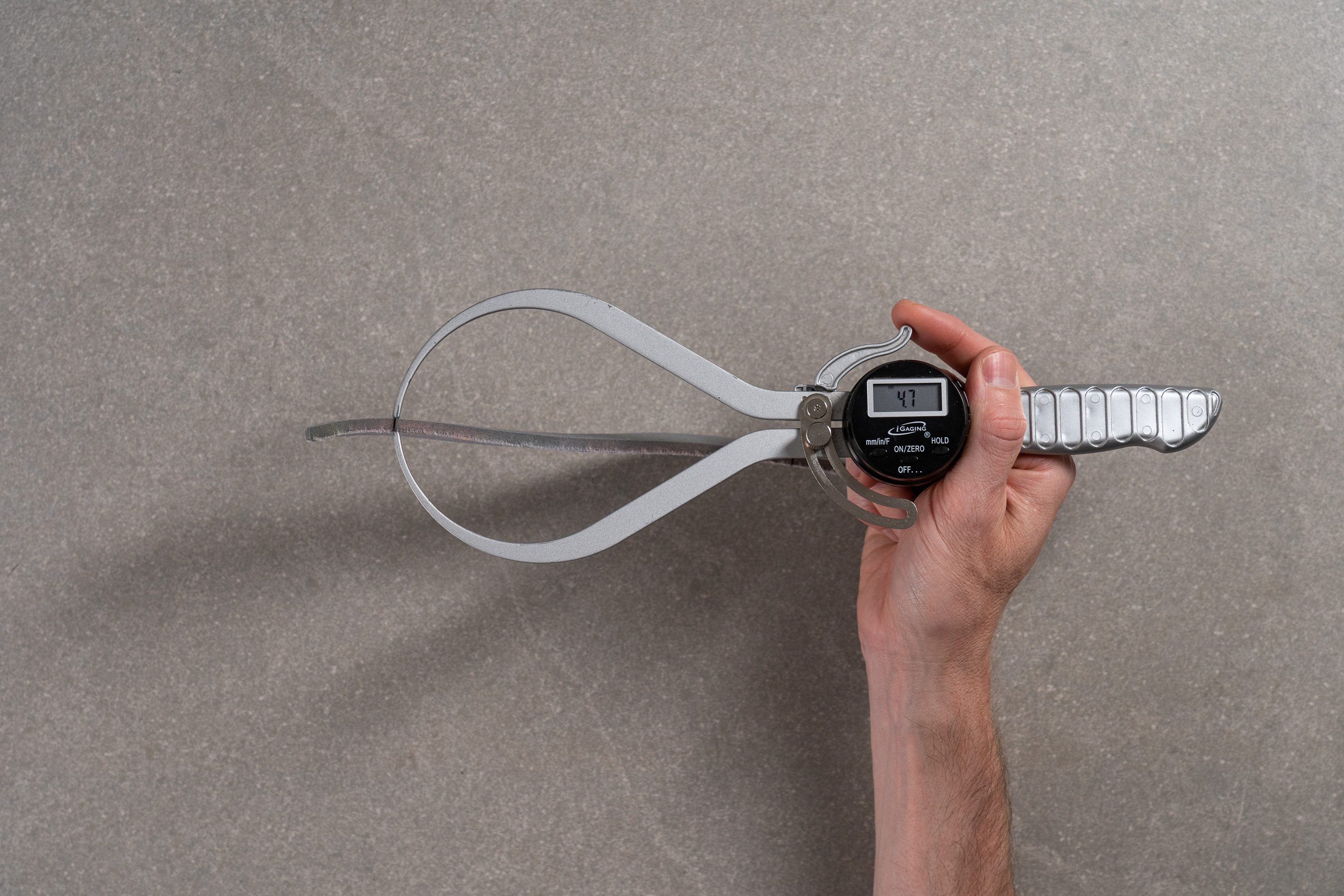
| Tektrel | 4.7 mm |
| Average | 4.7 mm |
Removable insole
The insole is not glued to the midsole, making it fully removable—this allows you to effortlessly swap it out for third-party footbeds if desired. And swapping might be worthwhile, as the stock footbed is fairly basic and not of the highest quality.
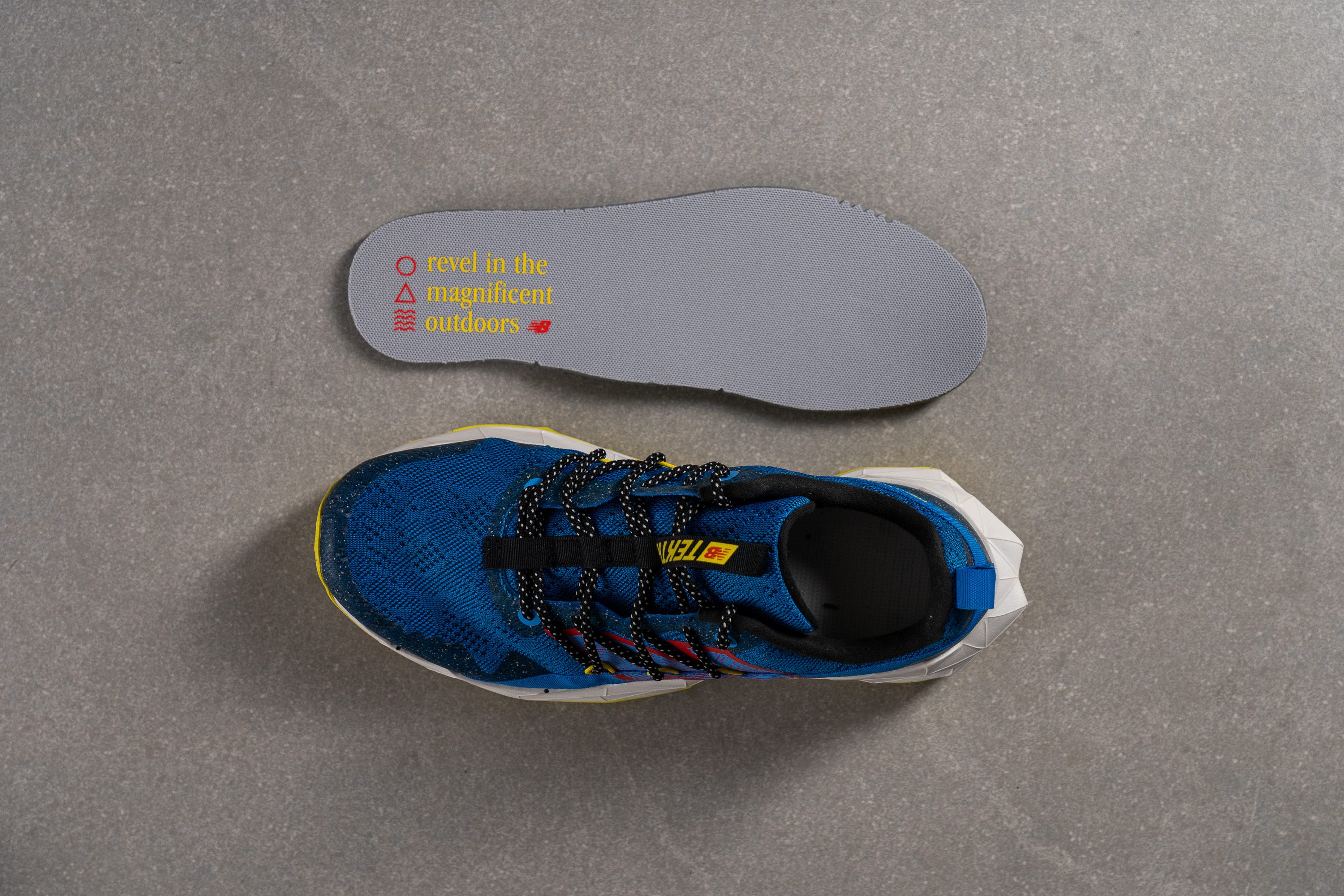
| Tektrel | Yes |
Midsole softness in cold (%)
To assess how this cheap and generic EVA foam would perform in real winter conditions, we placed it in our freezer for 20 minutes. The results from our follow-up durometer test were disappointing yet not surprising at all, showing a 37.5% uptick, which will be definitely noticeable underfoot in cold temperatures.
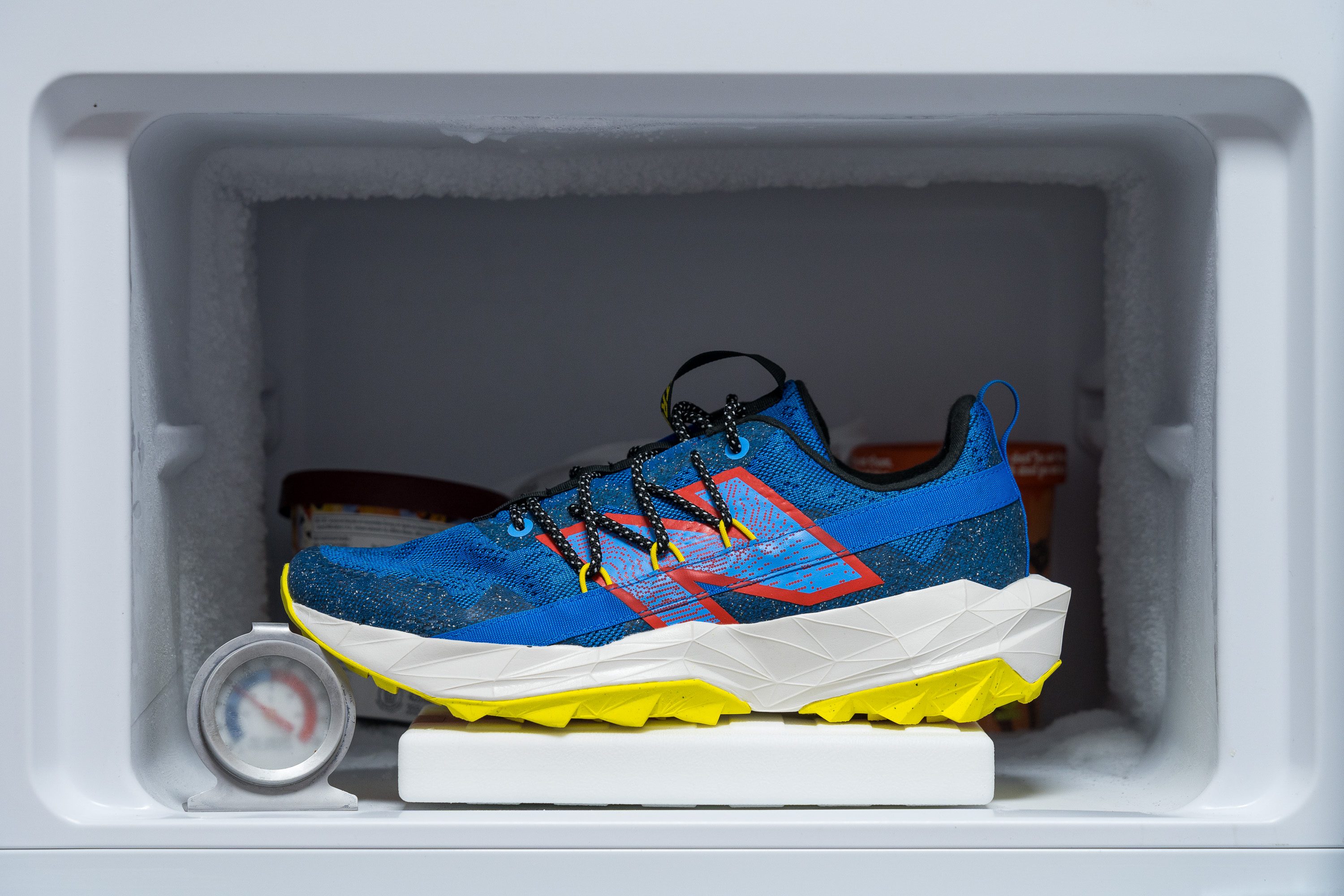
| Tektrel | 38% |
| Average | 26% |
Reflective elements
It's not surprising for us that the Tektrel lacks reflective elements. Expecting advanced features at such a budget-friendly cost often isn't realistic.
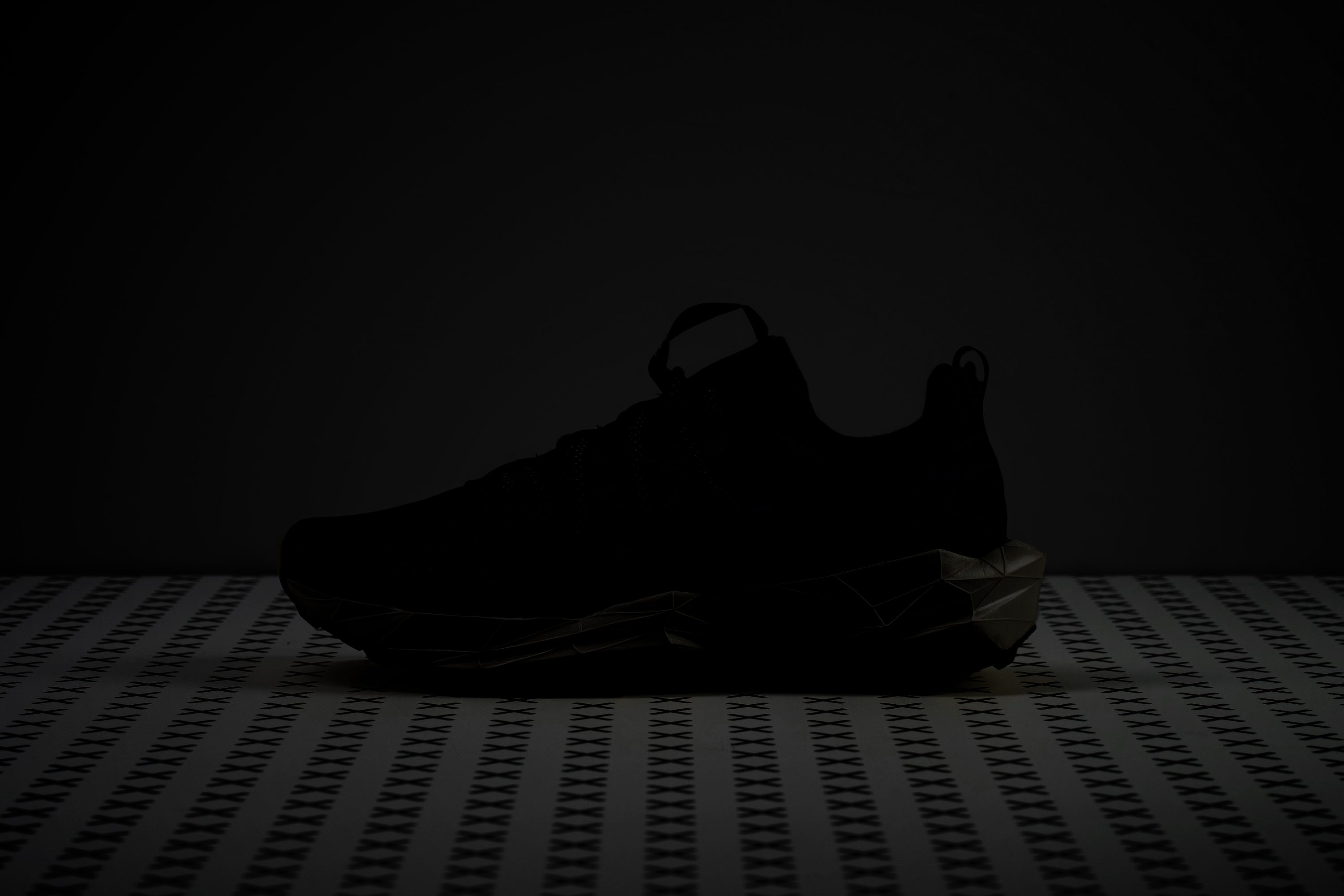
| Tektrel | No |
Tongue padding
We discovered the tongue of the Tektrel to be quite comfortable, hitting a great balance between plushness and weight with its 5.5 mm thickness. New Balance couldn't consider a thicker tongue anyway, as the shoe is already on the heavier side.
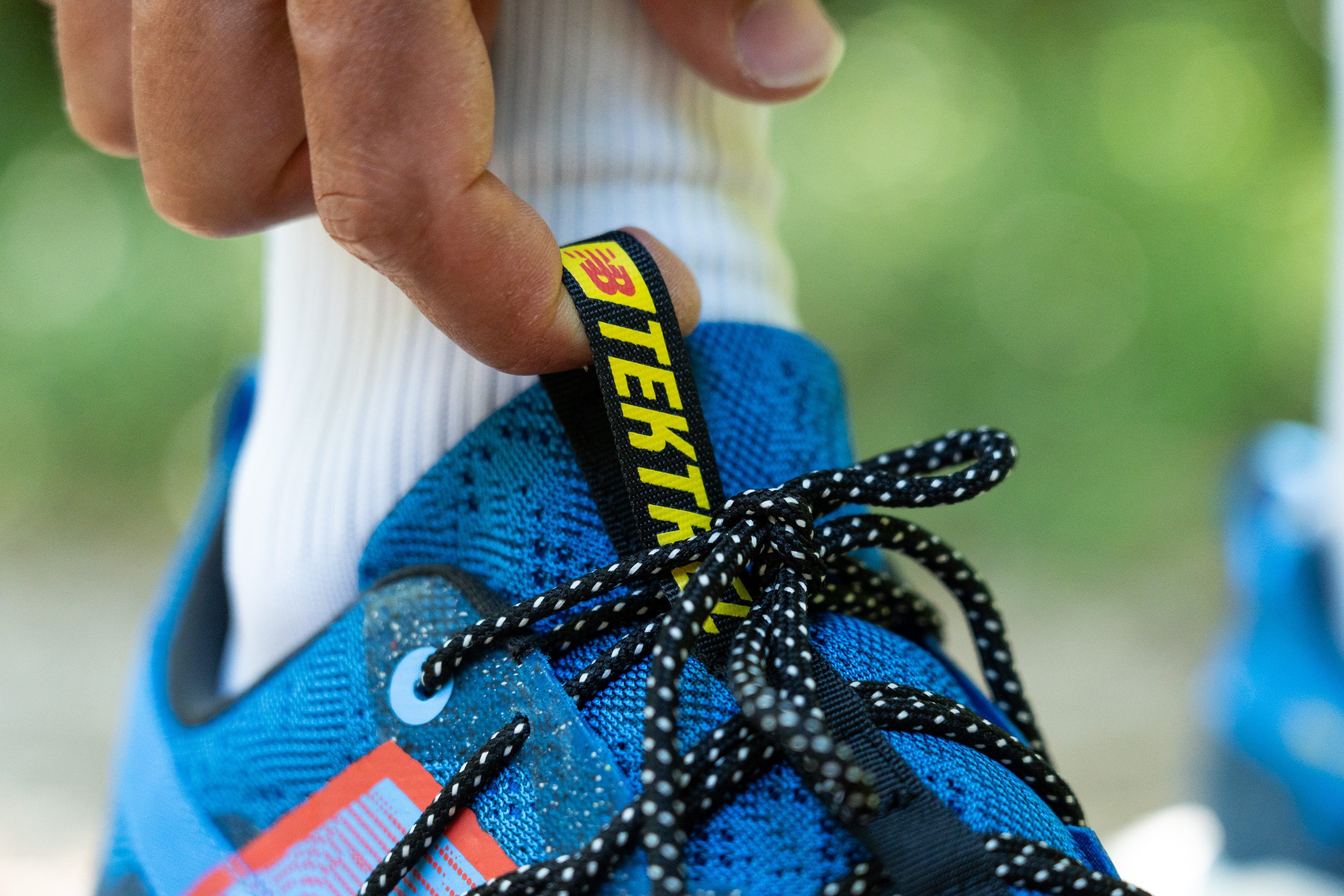
Additionally, the tongue features a finger-loop tab that's extremely handy for slipping your feet in and fine-tuning the fit. It also includes multiple loops to keep the tongue centered and secure, preventing any shifting during use—a crucial detail given the absence of a gusset.
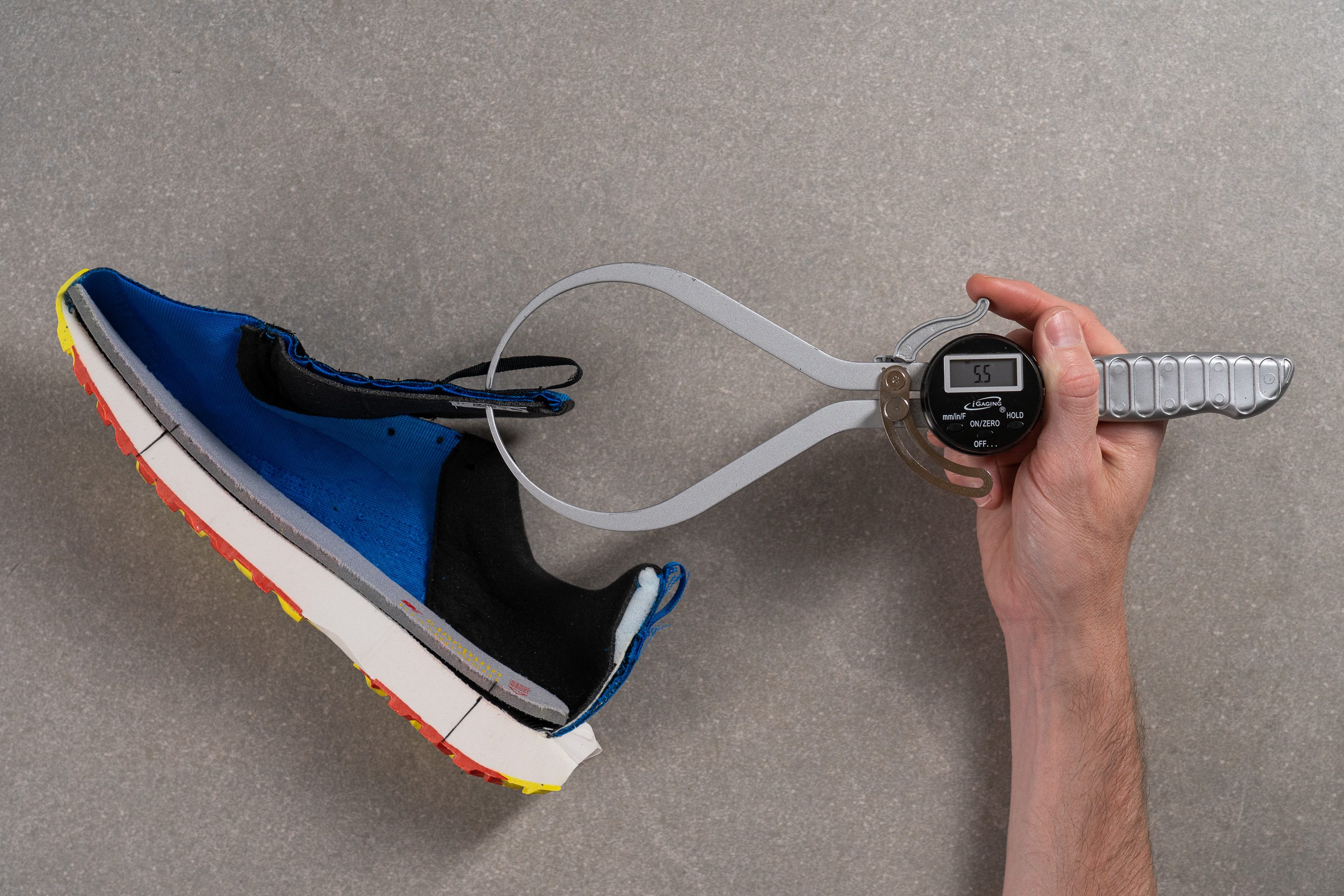
| Tektrel | 5.5 mm |
| Average | 6.4 mm |
Tongue: gusset type
Regrettably, the Tektrel does not include a gusseted tongue—a notable drawback for a hiking and trail shoe, as it permits debris to enter. However, expecting such a feature at its price point under $100 was perhaps overly optimistic.
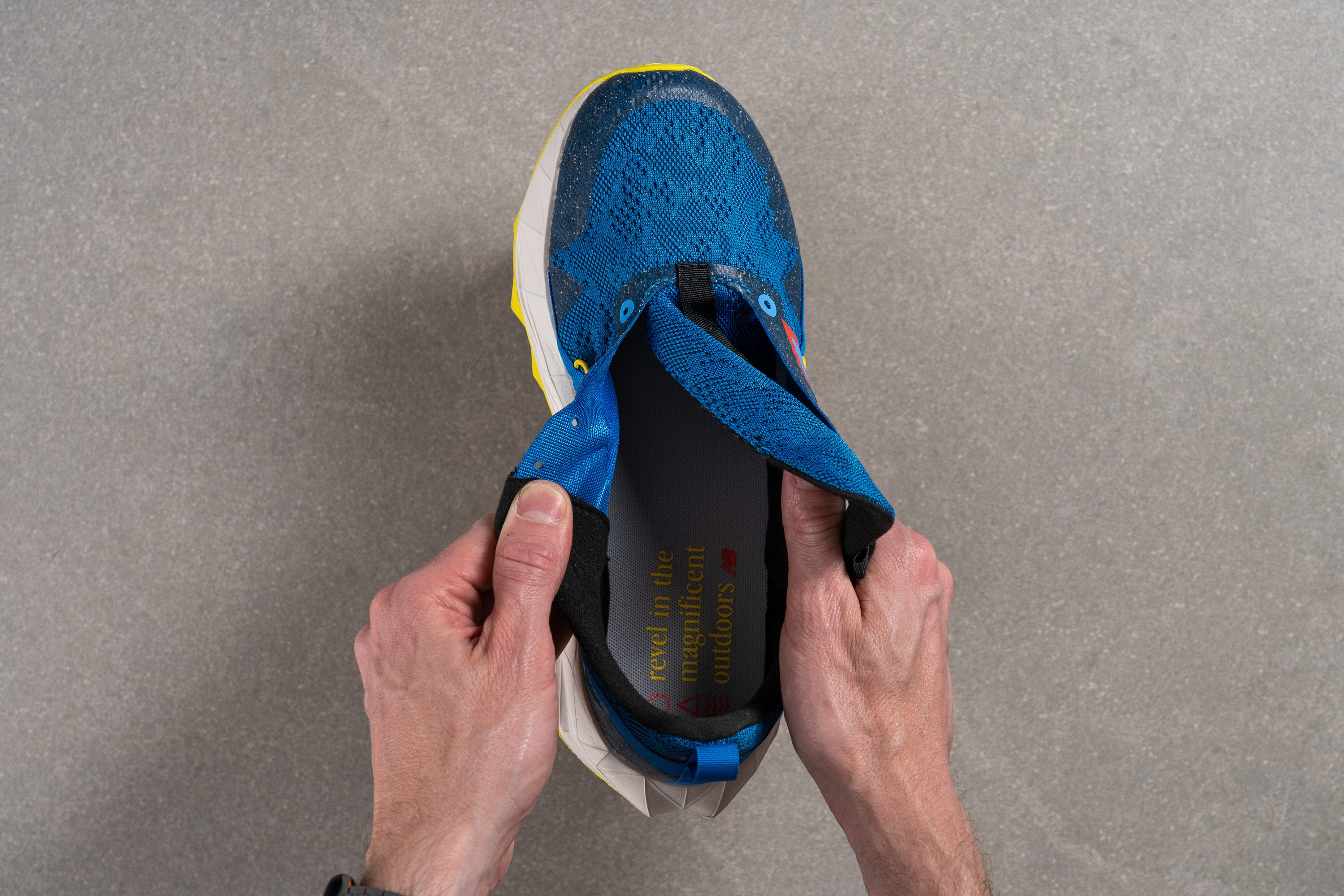
| Tektrel | None |
Heel tab
The heel of the Tektrel includes a handy finger-loop heel tab, a feature we found especially useful and interesting since many budget-friendly shoes often omit such convenient details.
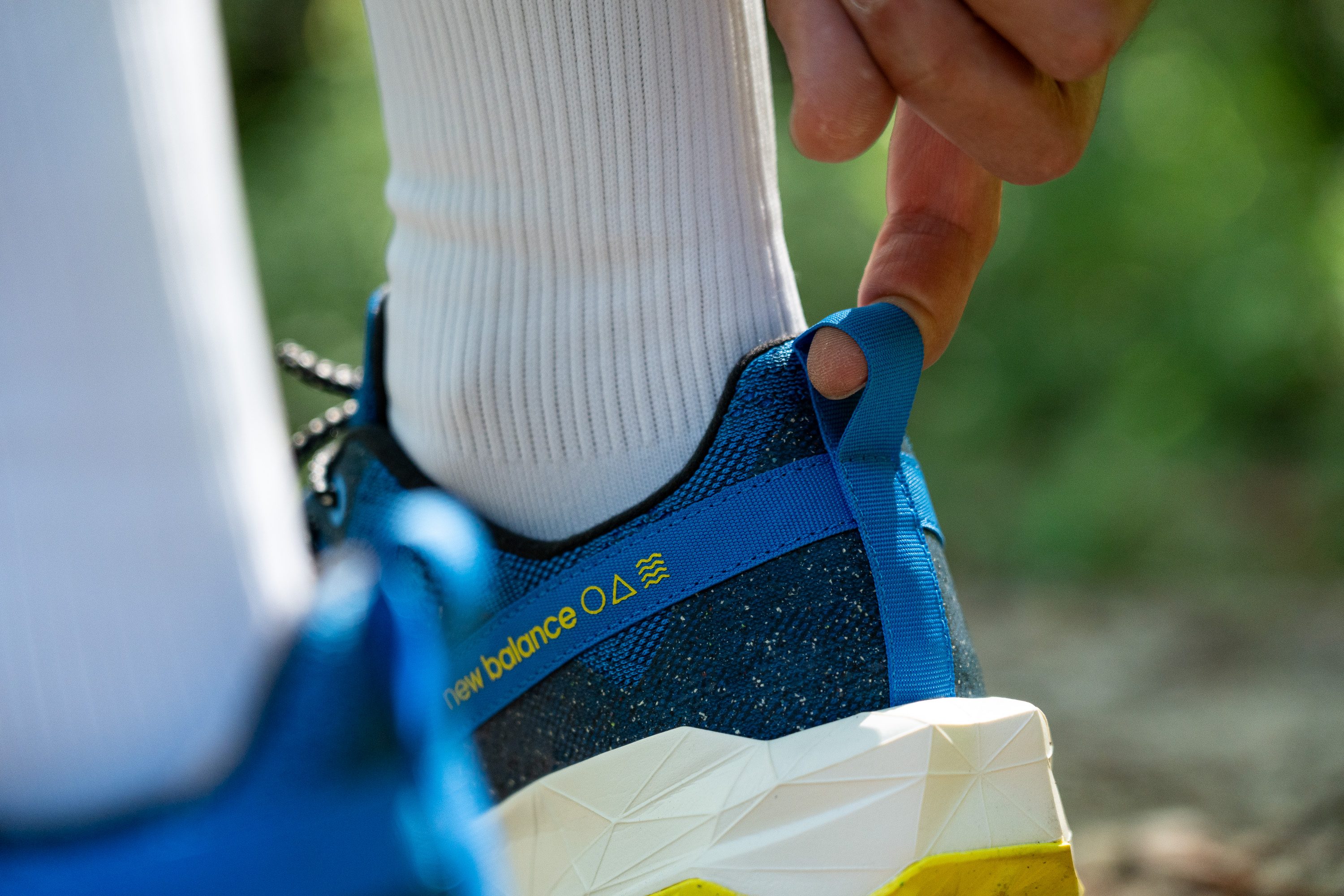
| Tektrel | Finger loop |

